Must-Have Blooms: Favorite Flowers to Grow in Your Early Summer Garden
The beginning of summer is that time of year when all of your hard work has paid off, and the flower garden comes alive with a burst of color and amazing fragrances. I’ll show you my favorite flowers in the early summer cut flower and cottage-style garden in late June and early July.
Early summer blooms such as lilies, zinnias, hydrangeas, daisies, and sunflowers brighten any outdoor space. From the charm of classic favorites like roses and lilies to more exotic varieties such as gladiolus, the perfect flowers can transform your garden into the most colorful floral haven.
Let’s check out some of my favorite must-have blooms that will elevate your early summer garden, attract pollinators, and create a thriving ecosystem.
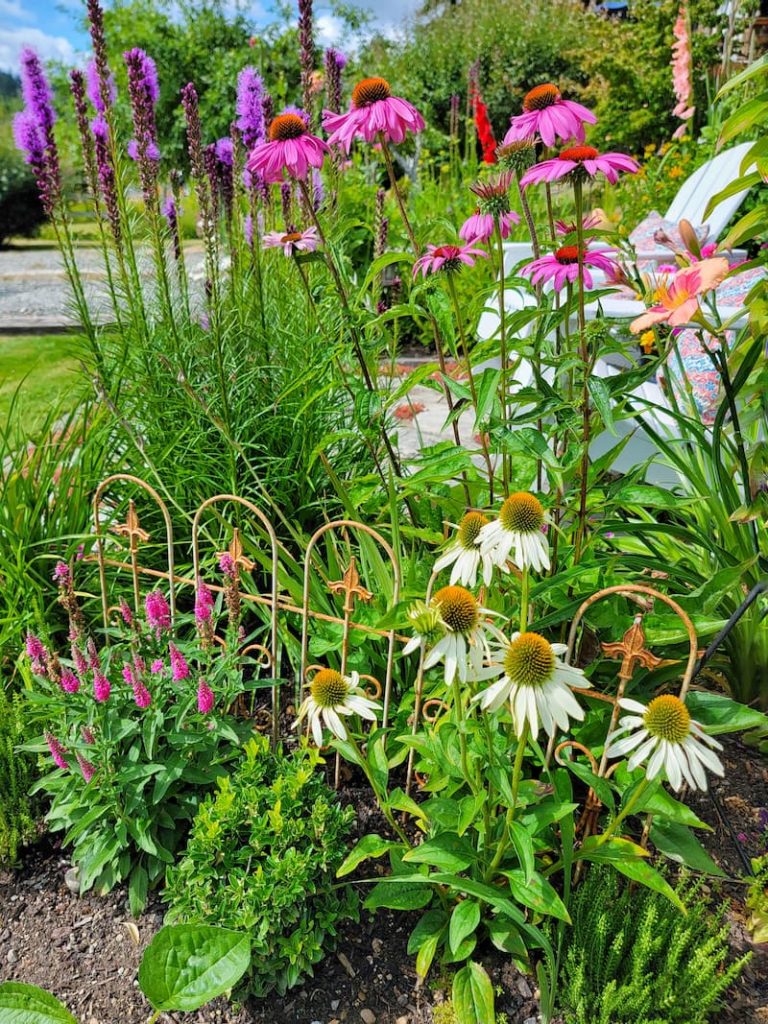
As an Amazon affiliate, I earn a commission from qualifying purchases at no additional cost to you. My blog also features other affiliate links for your convenience. Click here to read my privacy policy.
The Early Summer Cottage Garden Perennials

One of the things I love most about growing a charming cottage-style flower garden is how the view changes from month to month. The cottage garden mix of blooms growing in early summer is different from blooms in mid-summer flowers such as black-eyed Susans, sedum autumn joy, and asters bloom in the mid-summer months.
Benefits of Growing a Diverse Display of Flowers
There are many benefits to growing a diverse display of flowers in your garden.
A variety of blooms can attract a wide range of pollinators, including bees, butterflies, and hummingbirds, which are essential for the health and productivity of many plants. This helps to create a balanced ecosystem, reducing the likelihood of pest infestations and promoting natural pest control.
A diverse garden can improve soil health, with different plants contributing different nutrients and organic matter, improving the soil structure and fertility.
Grow a wide selection of flowers for continuous blooms throughout the season, providing constant color and interest in your garden.
Coneflower (Echinacea)
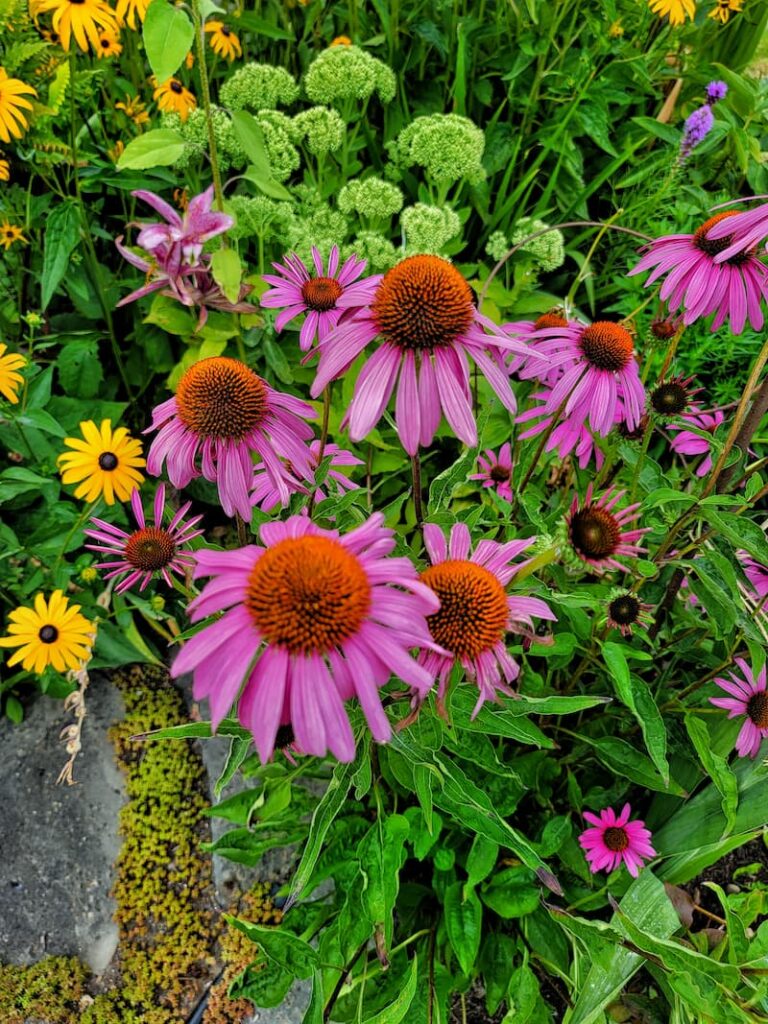
These hardy and vibrant summer perennial flowers are one of my favorites. Coneflowers have a daisy-like flower head and a unique center cone, attracting bees and butterflies throughout the season.

Coneflowers thrive in various soil types and withstand drought conditions. Due to their resilience and low-maintenance nature, they also look great planted in garden containers.
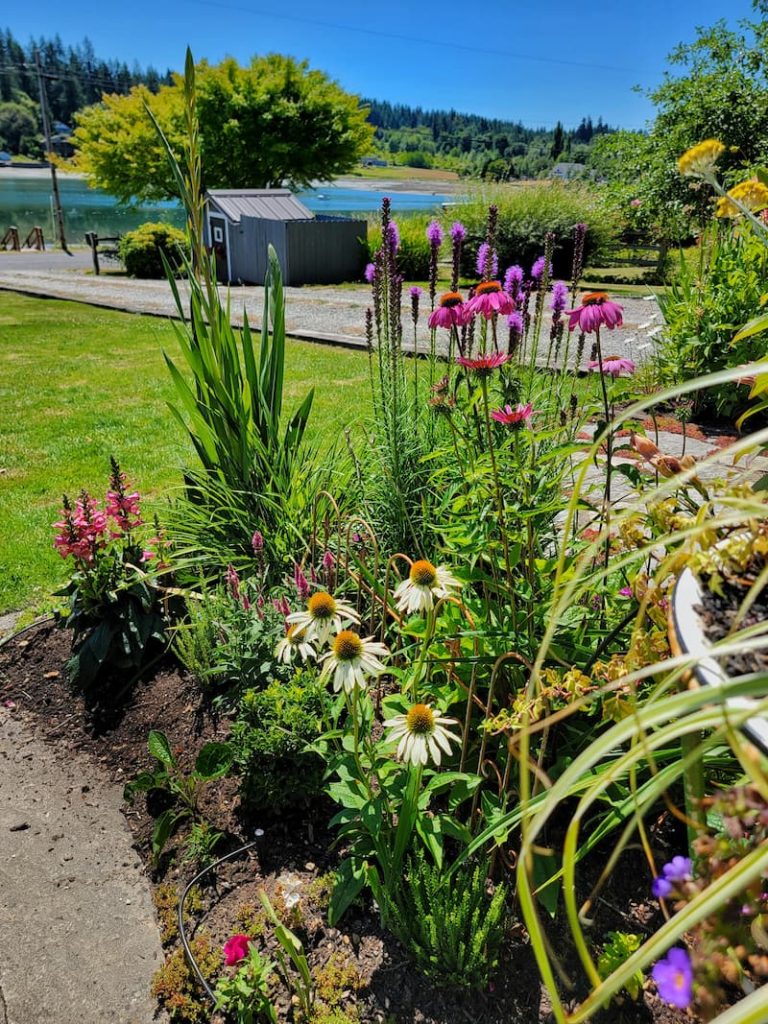
Also known as echinacea, coneflower blooms longer than most perennials in the summer, from early summer through fall.
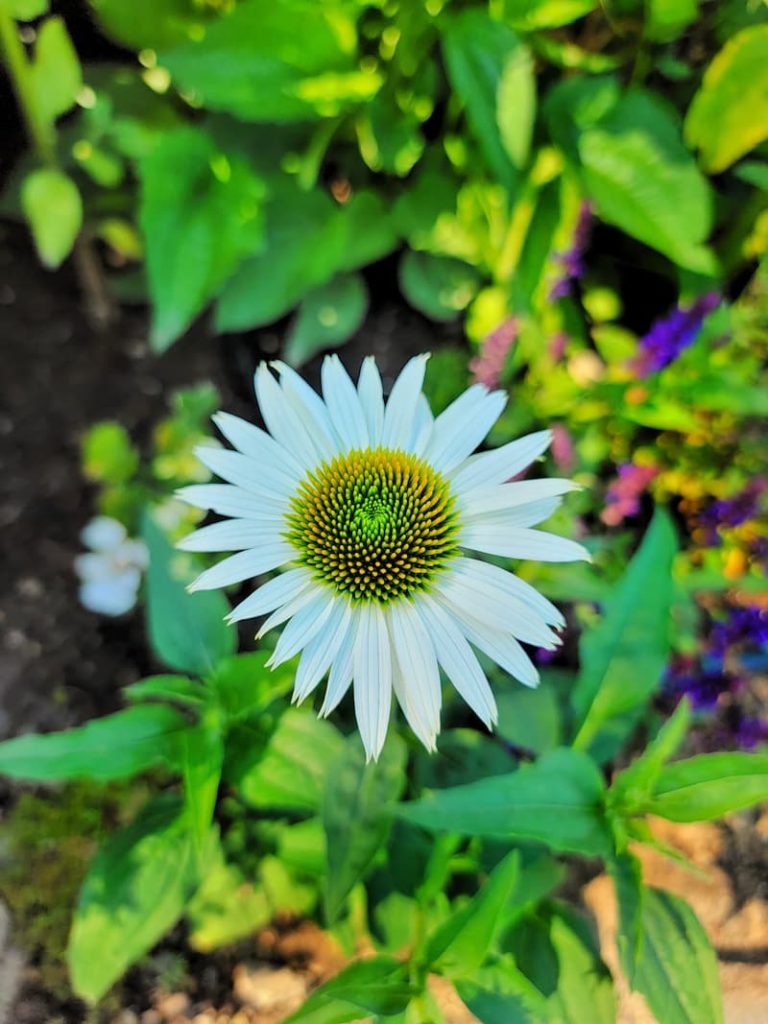
Coneflowers have medicinal properties, with Echinacea extracts commonly used to boost the immune system and treat colds.
Their seed heads provide bird food in the winter and attract pollinators such as bees and butterflies in the summer.
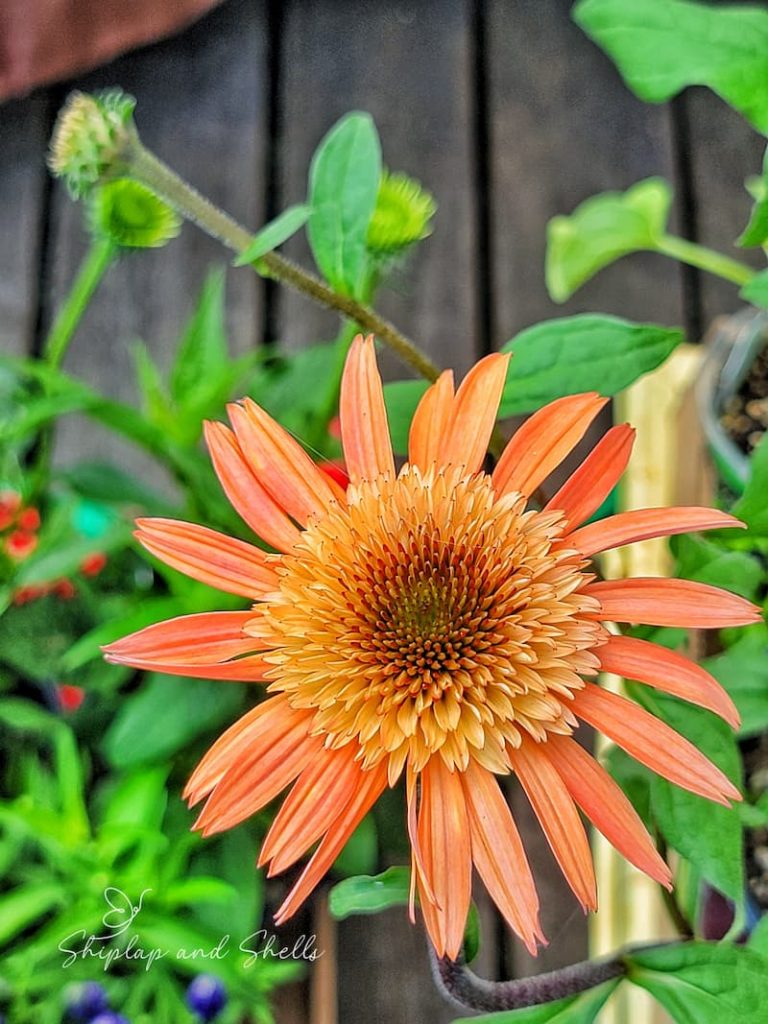
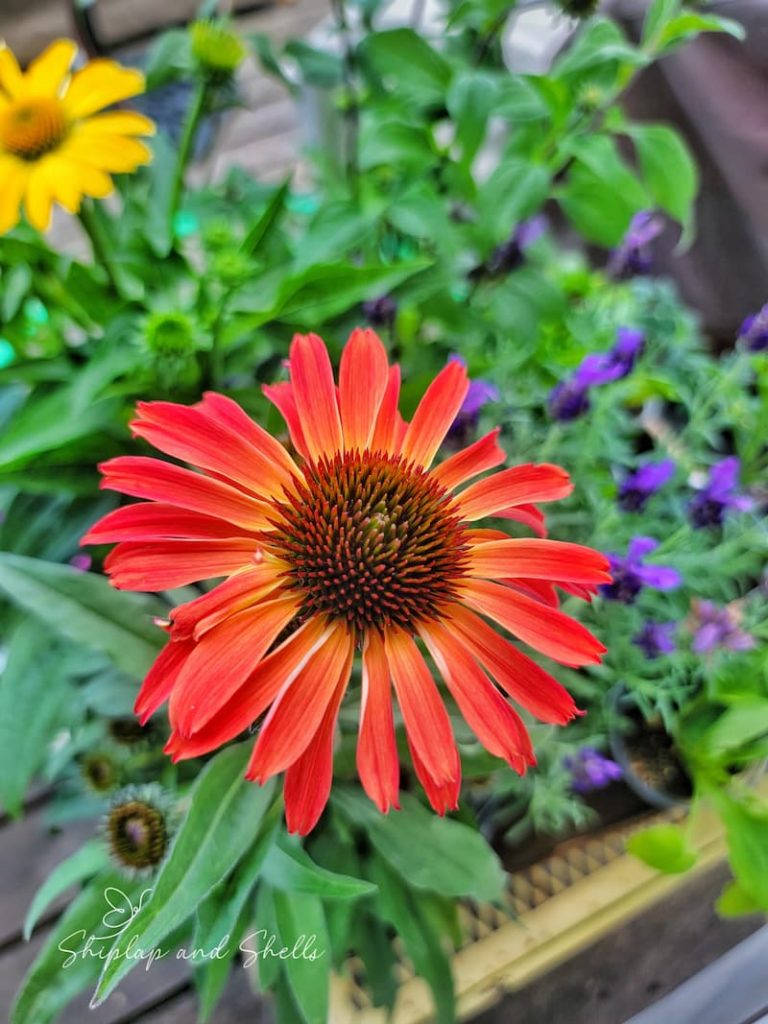
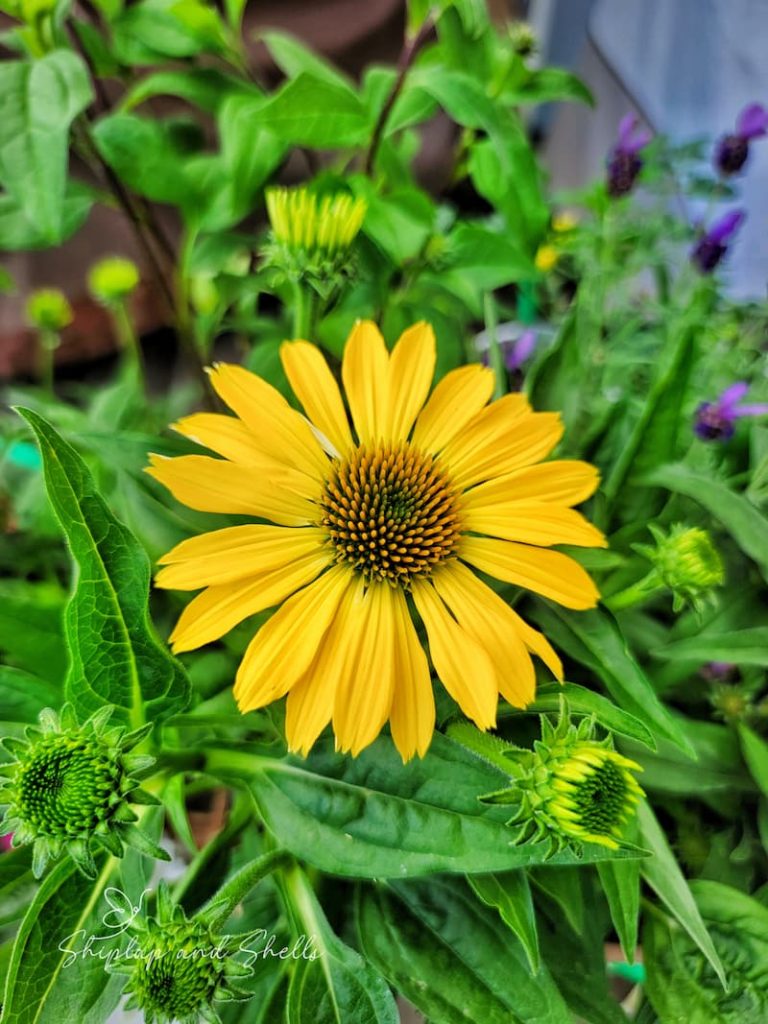
Coneflowers come in various colors, including purple, orange, red, yellow, and white, adding a splash of color to any garden.
And, of course, I now have five different colors to keep my summer flower garden happy!
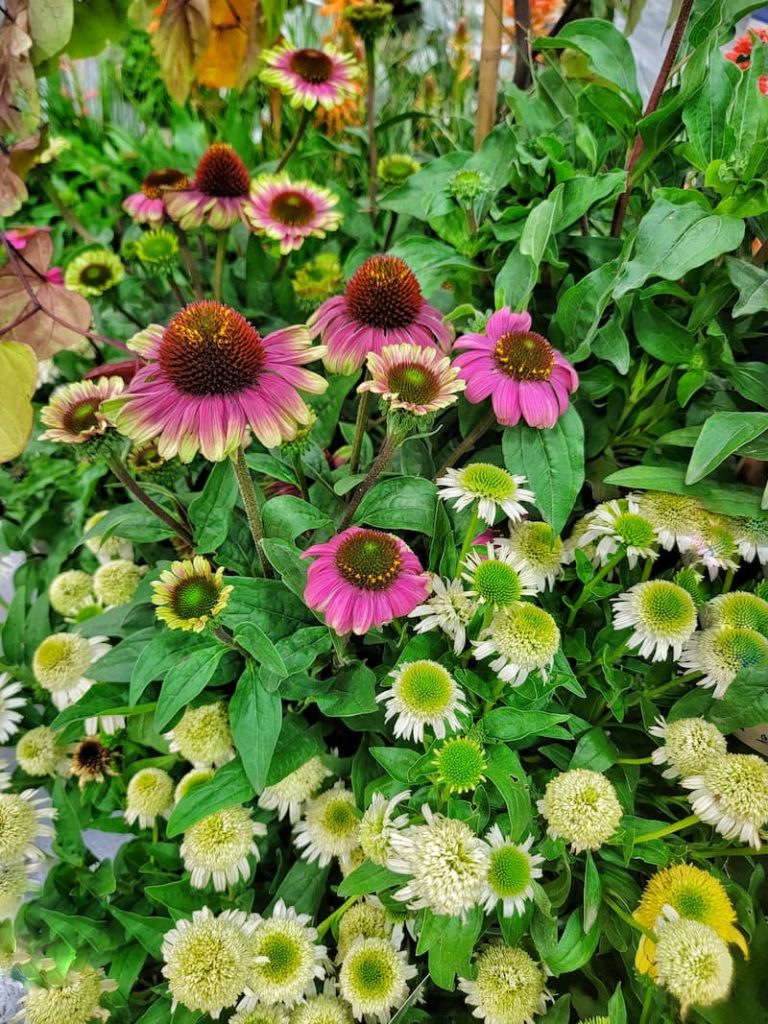
I found this fuchsia and green variety called Sweet Sandia at a garden show last year and fell in love. Thankfully, I found them at our local nursery and bought some for the garden.
Hydrangeas
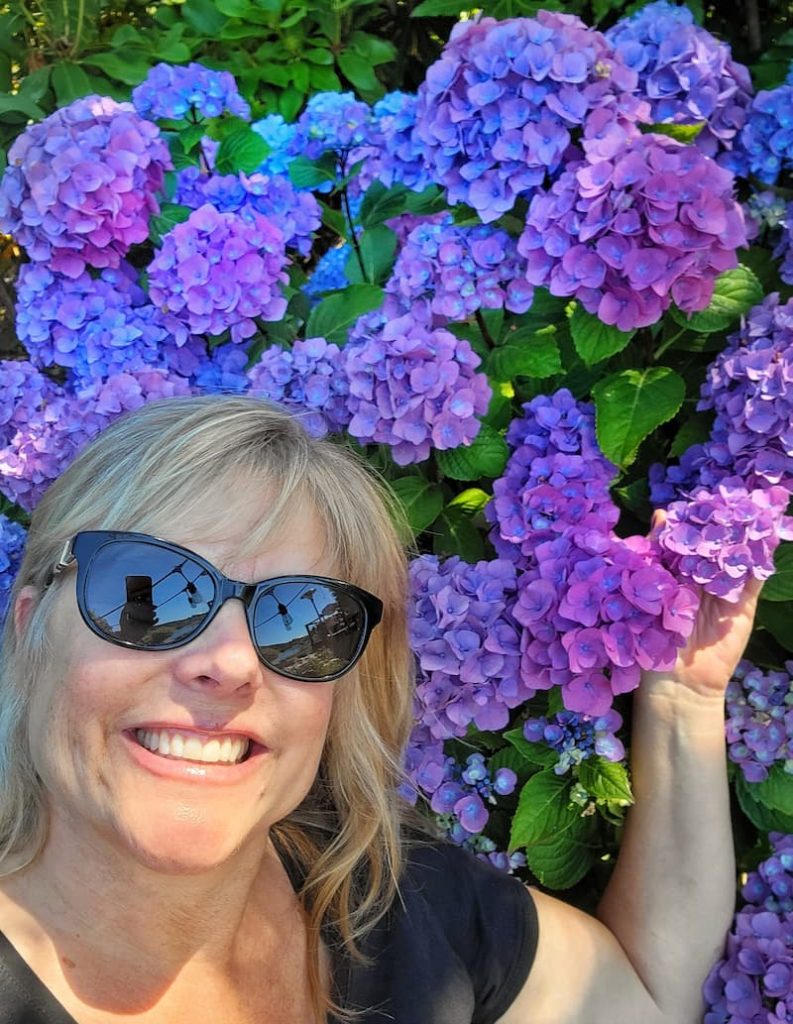
With their lush flower clusters, hydrangea flowers are a perfect addition to early summer traditional or cottage gardens. These deciduous shrubs produce blooms in various colors, including shades of blue, pink, white, and purple.
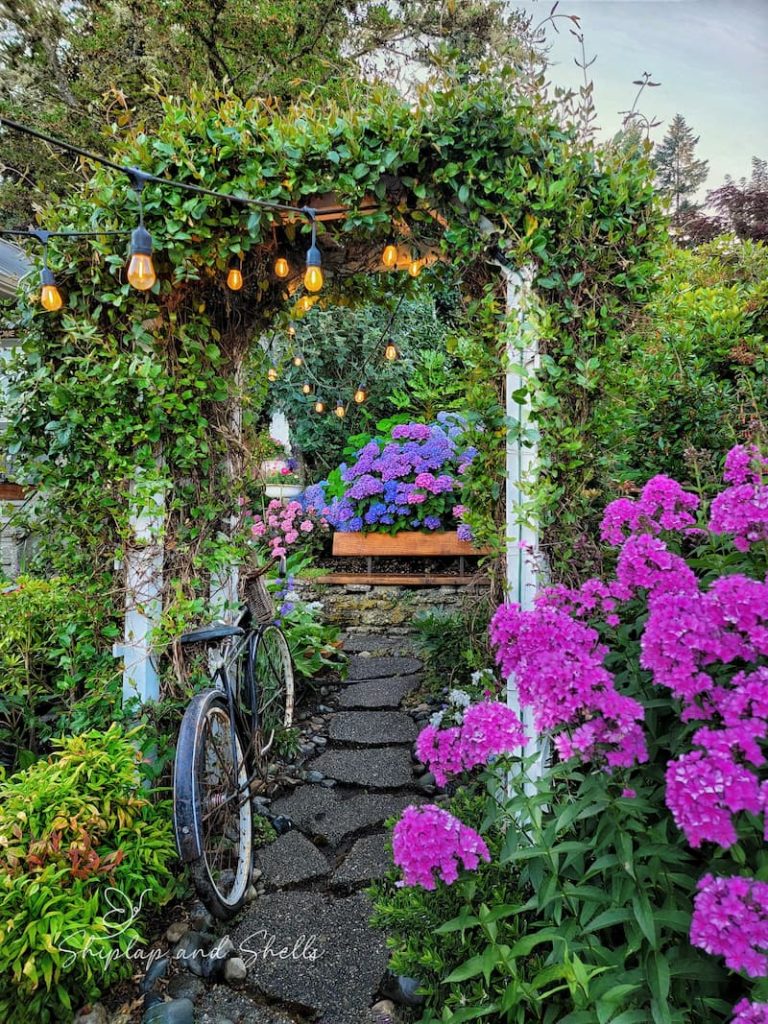
Hydrangeas are versatile and can be grown in various garden settings, from borders and hedges to container gardens.
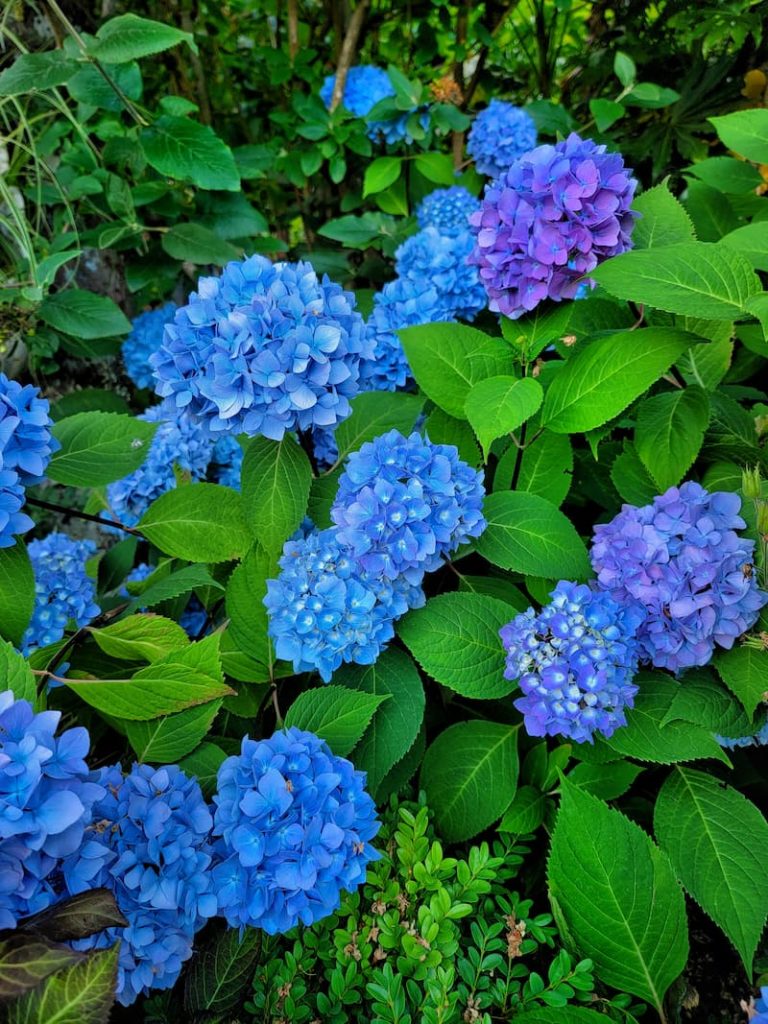
They thrive in well-drained soil and prefer partial to full shade, making them ideal for brightening shaded garden areas.
Hydrangeas are relatively easy to care for and provide stunning flowers from early summer into late fall.
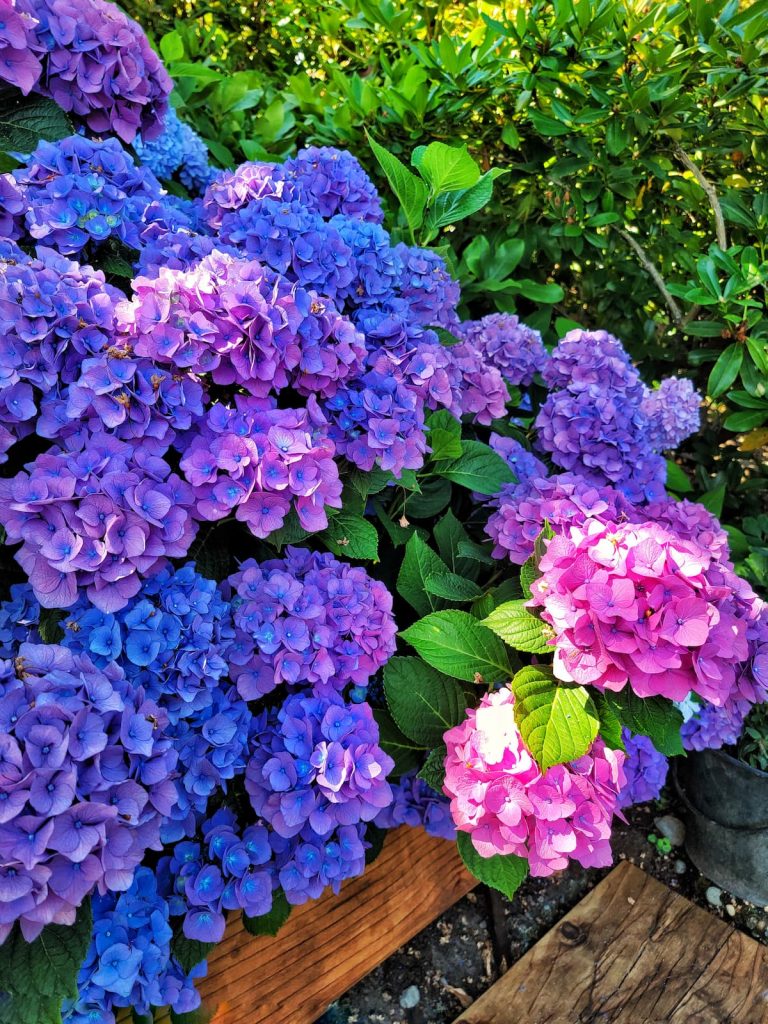
The color of hydrangea flowers can change based on the soil’s pH level, with acidic soils producing blue blooms and alkaline soils resulting in pink flowers.
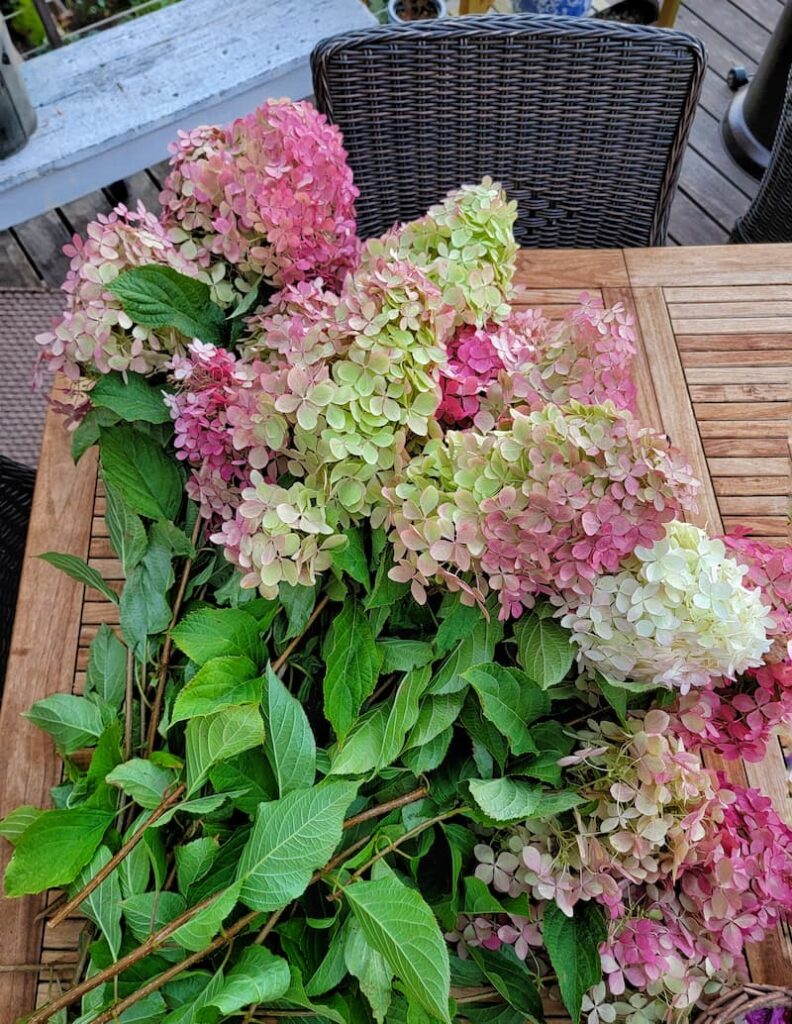
Their dried flowers also make beautiful arrangements, extending their beauty indoors.
Roses
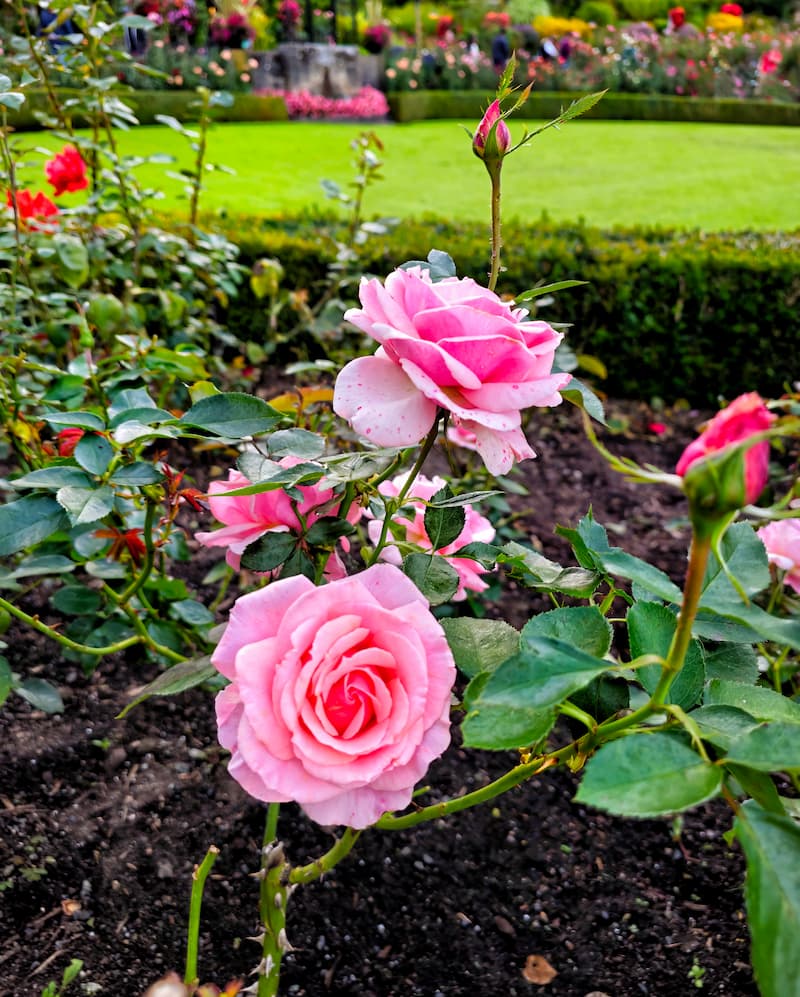
Roses are available a wide range of varieties and colors, from classic reds and pinks to vibrant yellows, oranges, and pure whites. Their blooms can vary from single-petaled to lush, multi-petaled forms, each with its own unique charm.
Roses bloom from late spring through fall. They thrive in well-drained soil and full sun and can flourish for many years with proper care, including regular pruning and feeding.

These gorgeous flowers are also highly versatile and perfect for garden beds, borders, climbing over arbors, or as standalone shrubs. They attract pollinators like bees and butterflies.
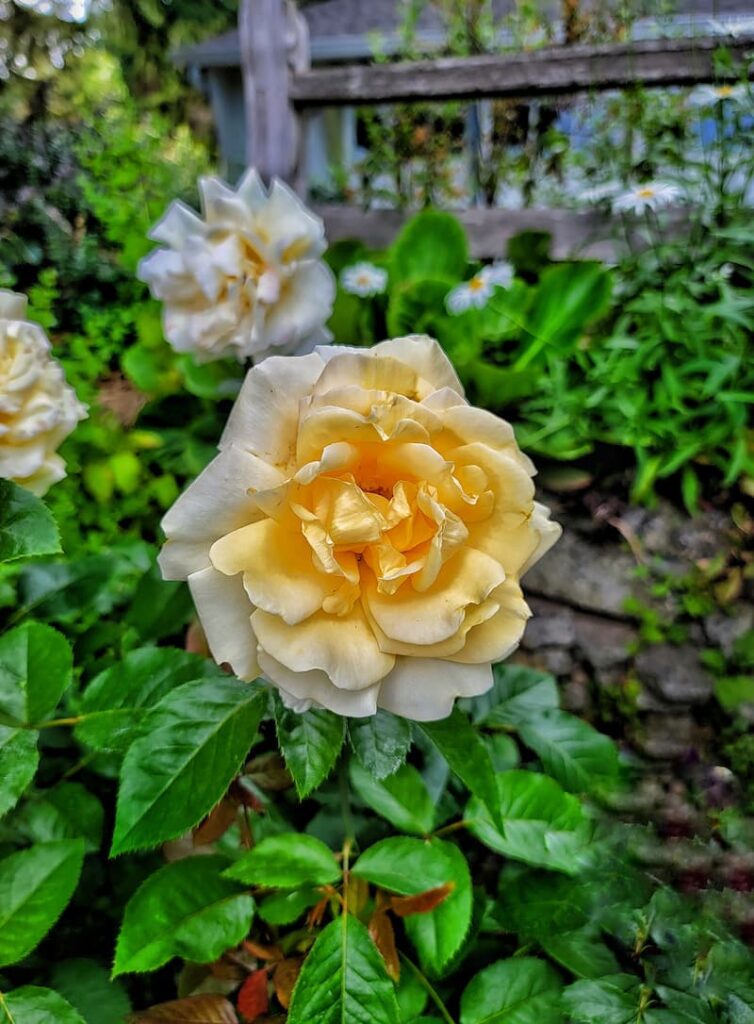
With their stunning blooms, delightful fragrance, and rich symbolism, roses remain a favorite choice for gardeners and flower enthusiasts.
Lilies
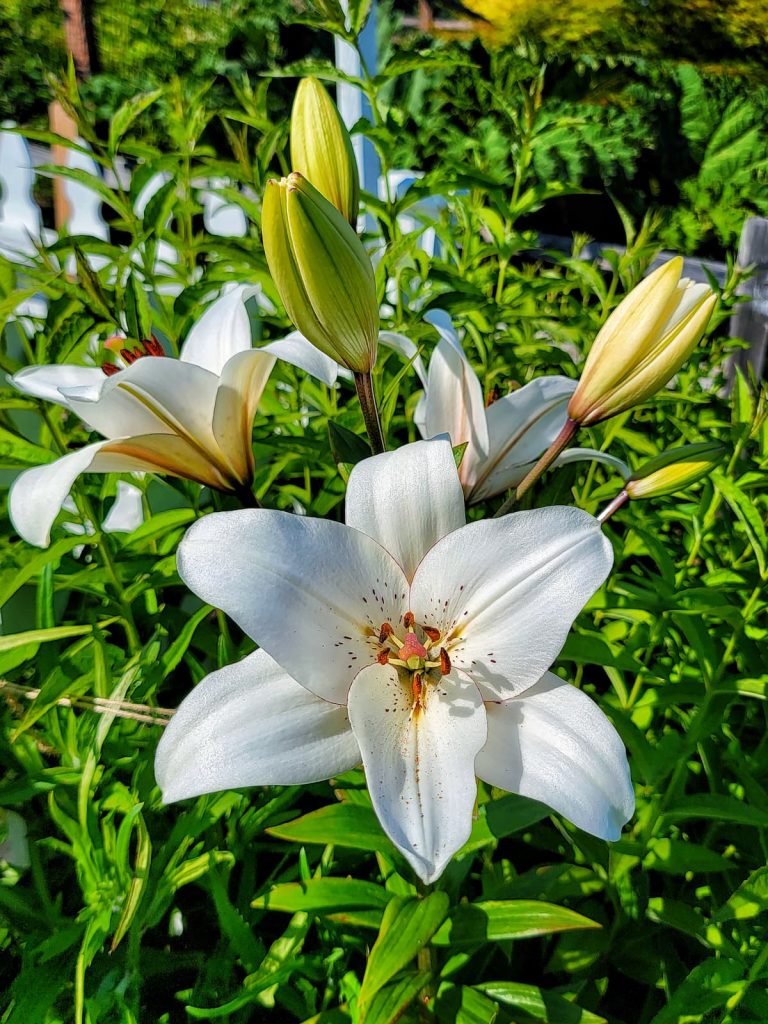
Lilies are known for their elegant, trumpet-shaped flowers and enchanting fragrance. They come in a variety of types, including Asiatic, Oriental, and trumpet lilies. Each offers unique features and a gorgeous show of colors, ranging from pure white and vibrant yellows to deep reds and pinks.
Lilies typically bloom in early to mid-summer and are relatively easy to grow, thriving in well-drained soil and full sun to partial shade. Pollinators, such as bees and hummingbirds, are attracted to these perennials.
Eyeliner Lily
Eyeliner Lilies are a variety of Asiatic lilies. Their white petals are delicately edged with a fine, dark line, resembling applied eyeliner, which gives them their specific name.
These perennials thrive in well-drained soil and full sun to partial shade. They are also relatively pest-resistant, making them low-maintenance.
Stargazer Lily
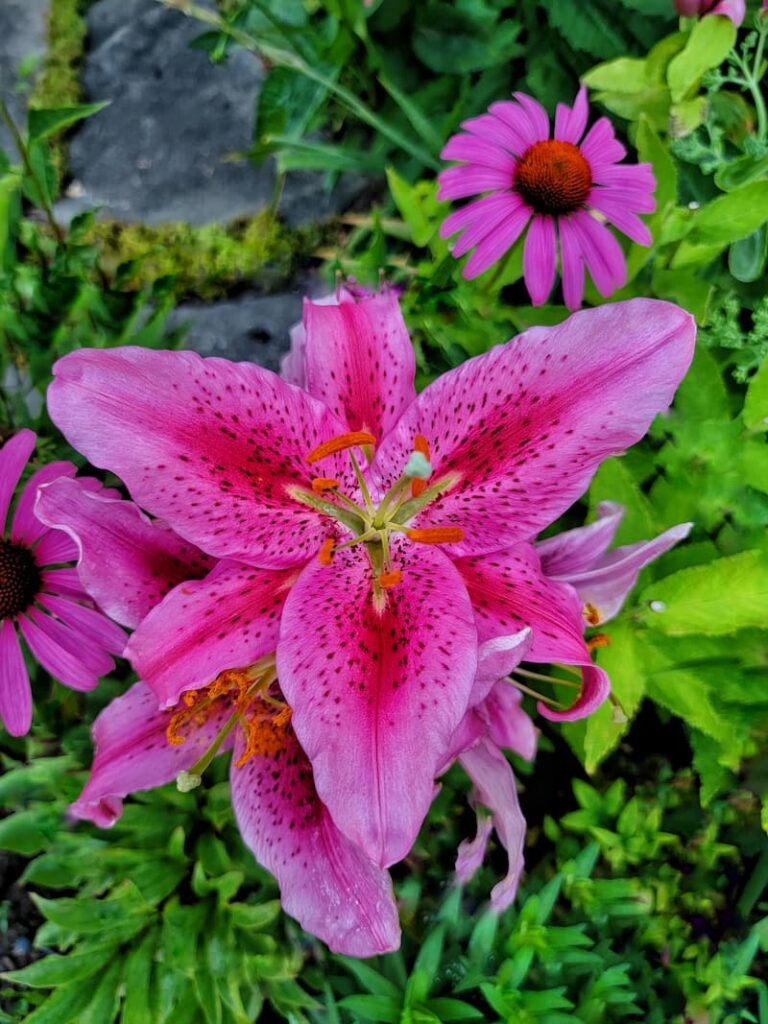
The Stargazer Lily is a variety of Oriental lilies known for its sweet, spicy fragrance. Its large, upward-facing blooms with vibrant pink petals, often speckled with red spots and edged in white, are stunning in any garden.
Blooming in mid to late summer, Stargazer Lilies stand out with their vibrant colors and bold presence.
Their tall, sturdy stems are ideal for garden borders, flower beds, container gardens, and stunning cut flower arrangements that bring their beauty and scent indoors.
Garden Show Reblooming Daylily
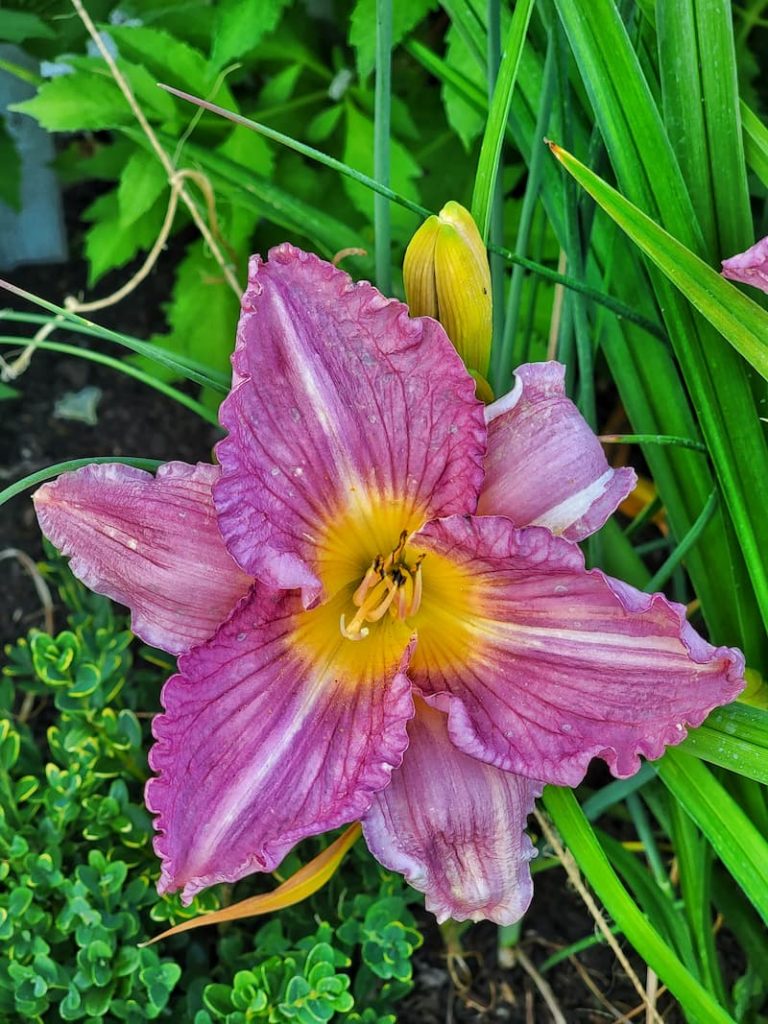
What I love about this daylily is its ability to bloom multiple times throughout the growing season. Unlike many other daylilies with a single blooming period, reblooming daylilies continually produce vibrant flowers from early summer into fall.
The Garden Show Reblooming Daylilies have large, showy blooms in various colors, from sunny yellows and fiery oranges to deep reds and purples. They often have stunning eye zones or contrasting edges.
Daylily Ageless Beauty
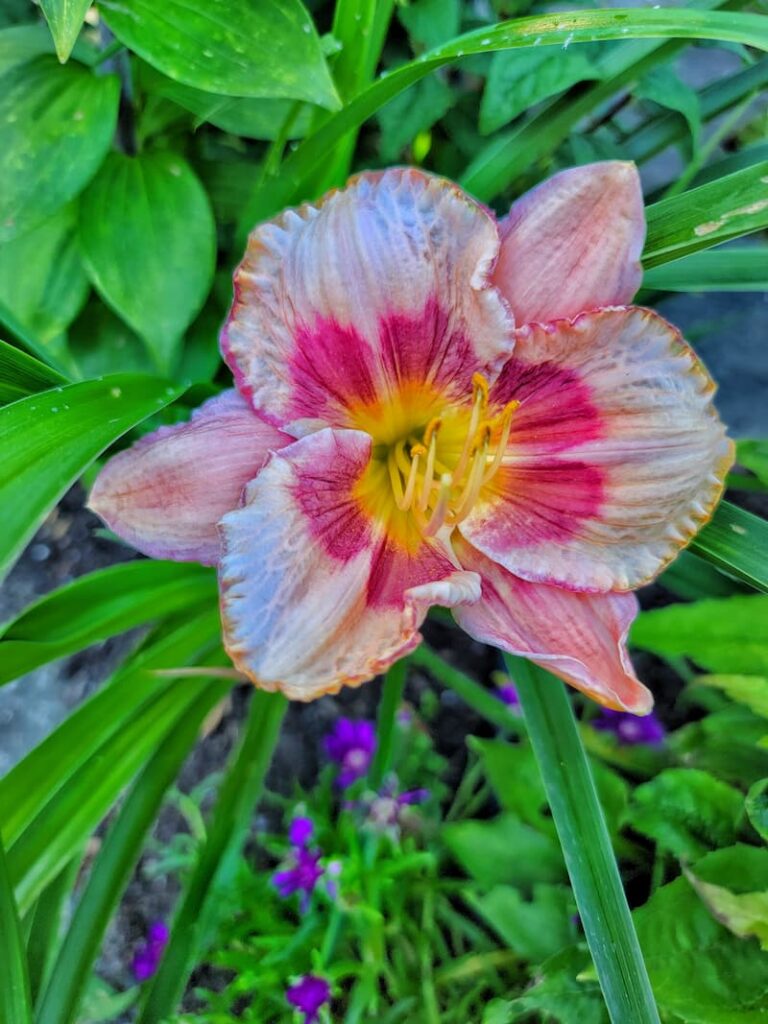
A Daylily Ageless Beauty’s large, ruffled blooms come in soft, creamy pastel shades often accented with a delicate eye zone and a subtle fragrance.
Primal Scream Daylily
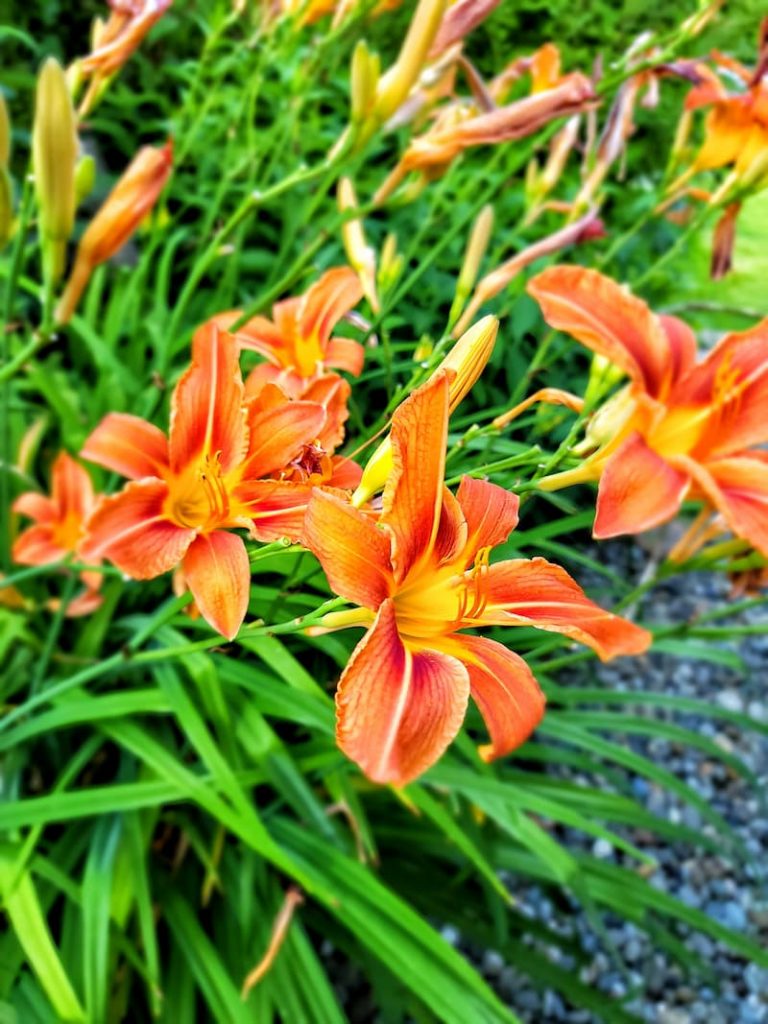
Primal Scream features fiery orange petals with a distinctive spider-like shape. These stunning flowers bloom in early to mid-summer and are notable for their intense color and unique form, reaching up to eight inches in diameter.
Most Daylily Flowers Last for One Day
The name “daylily” comes from the Greek words “hemera,” meaning day, and “leiron,” meaning lily. This name reflects that each flower typically opens in the morning and dies by nightfall.
Daylily plants produce multiple buds on each stem, and a single plant can have several stems, resulting in a prolonged blooming period that can last for weeks or even months.
Although each flower is short-lived, it displays blooms throughout its flowering season.
Garden Supplies and Tools
Check out my favorite garden supplies and tools for the growing season. Whether you’re looking for potting soil or deer repellent, you’ll find what I use in my own garden.
Clematis
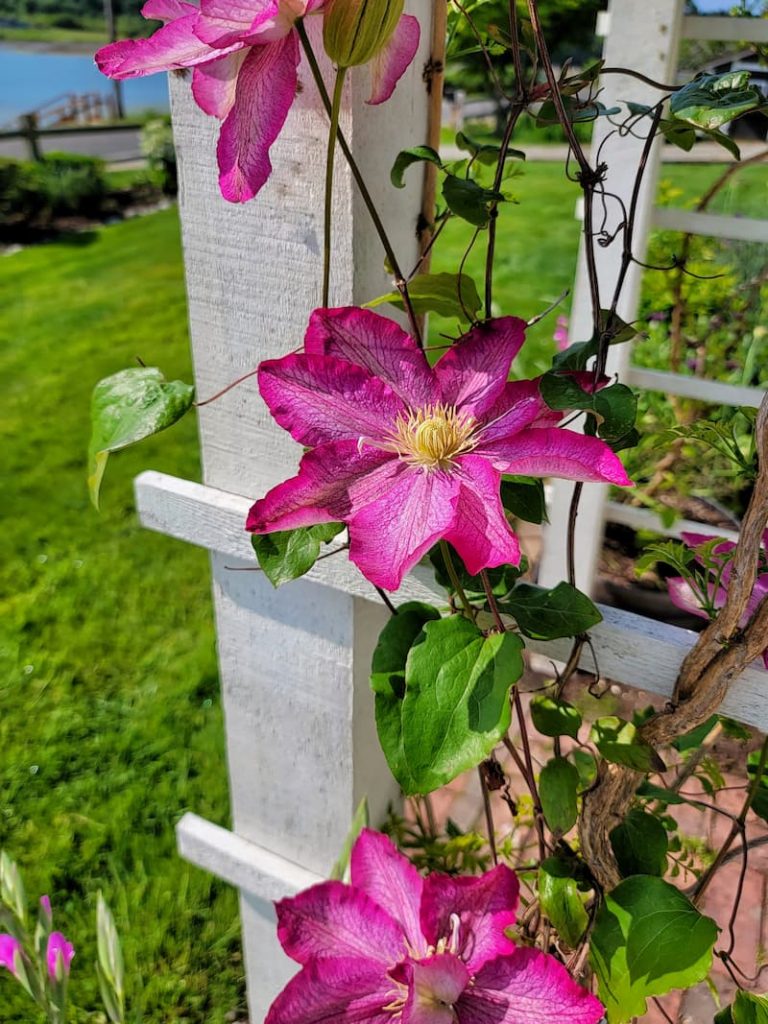
Clematis blooms in various colors, ranging from large, single flowers to small, clustered varieties. They are available in various sizes and colors, including deep purples, vivid reds, soft pinks, and soft whites.
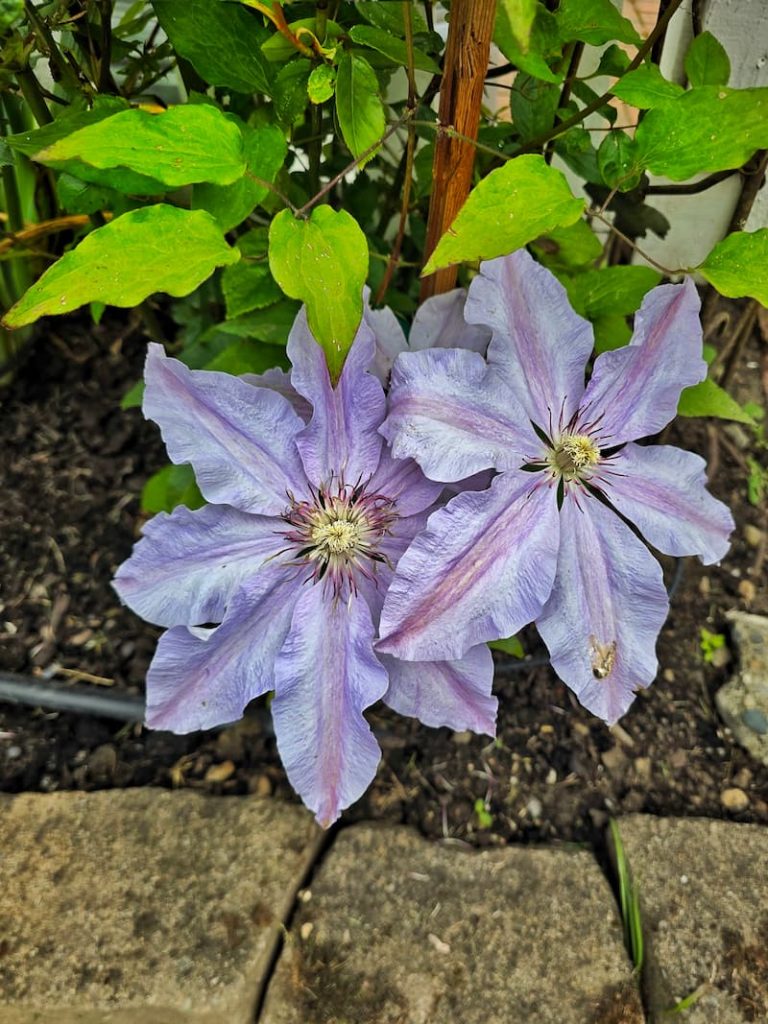
Blooming periods vary among varieties, with some clematis flowering in early spring, others in summer, and others well into fall, ensuring a continuous display throughout the growing season.
This perennial climber can be trained to grow on trellises, fences, and arbors, adding vertical interest and lush greenery to the garden.
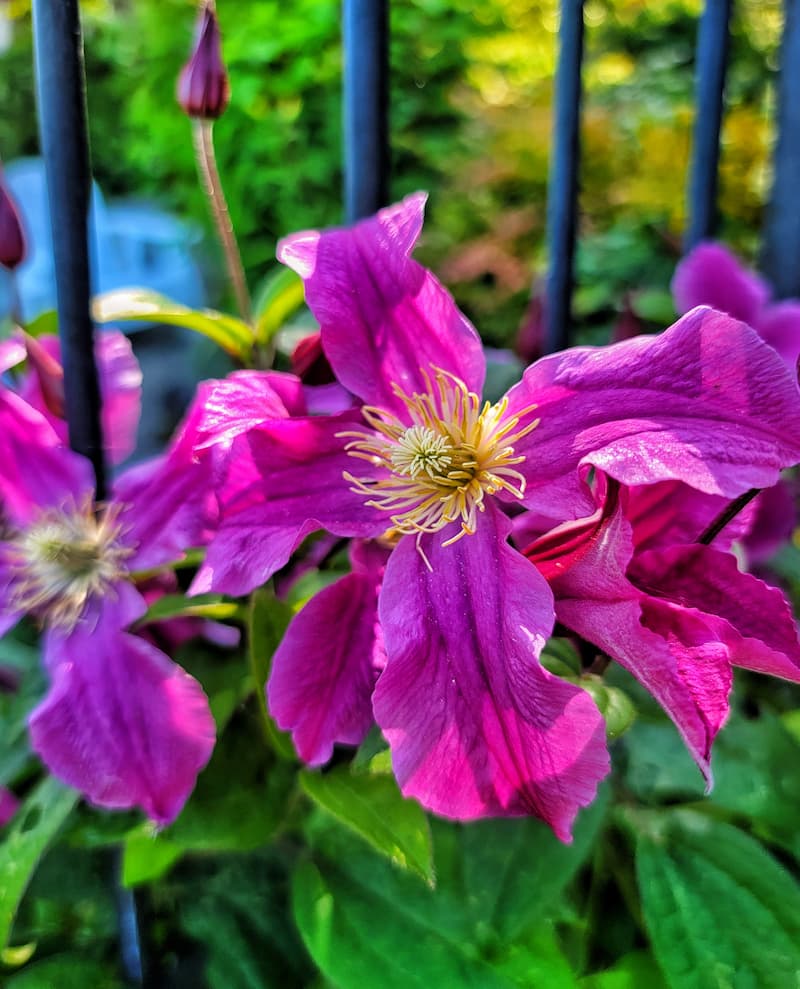
Clematis plants thrive in well-drained soil, keeping their roots cool and shaded. Their foliage thrives in full to partial sun. Known for their relatively low maintenance, clematis are also resilient to pests and diseases.
Gladiolus
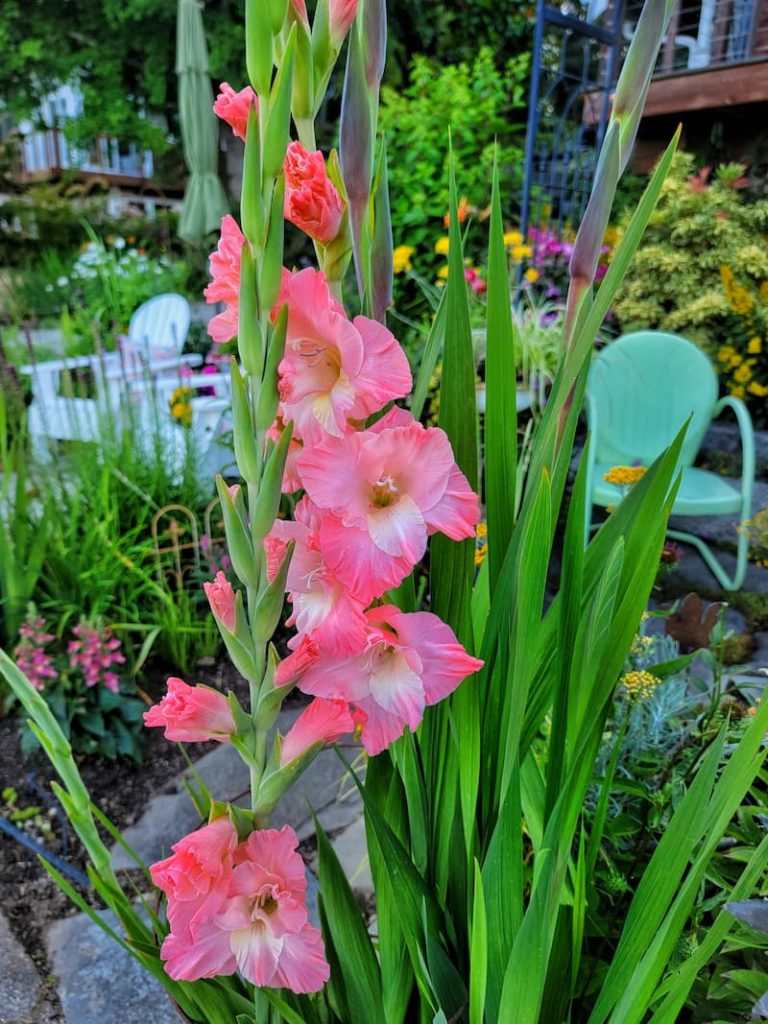
These beautiful and majestic flowers add dramatic interest to the early summer garden. Known for their tall, sword-like spikes embellished with numerous large, vibrant blooms, gladioli come in a dazzling array of colors, including red, pink, yellow, white, purple, and orange shades.
It’s important to stake a taller plant like gladiolus, or it will fall over without support.
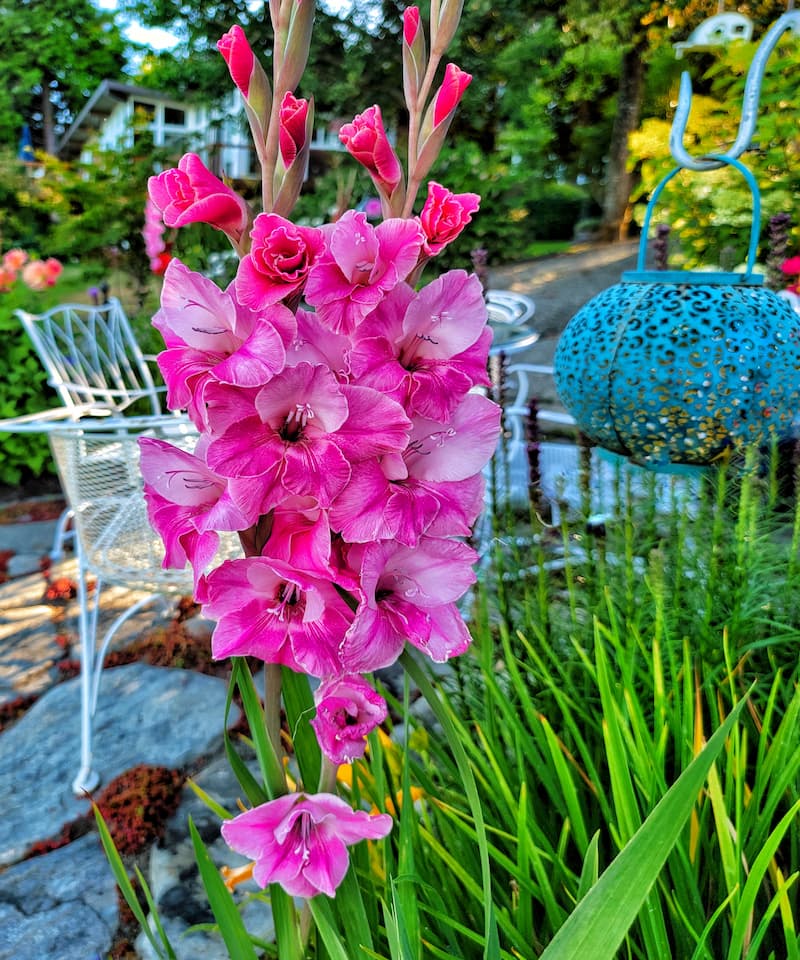
Their long-lasting flowers are perfect for floral arrangements, bringing their beauty indoors and making them a favorite for fresh-cut bouquets.
Allium
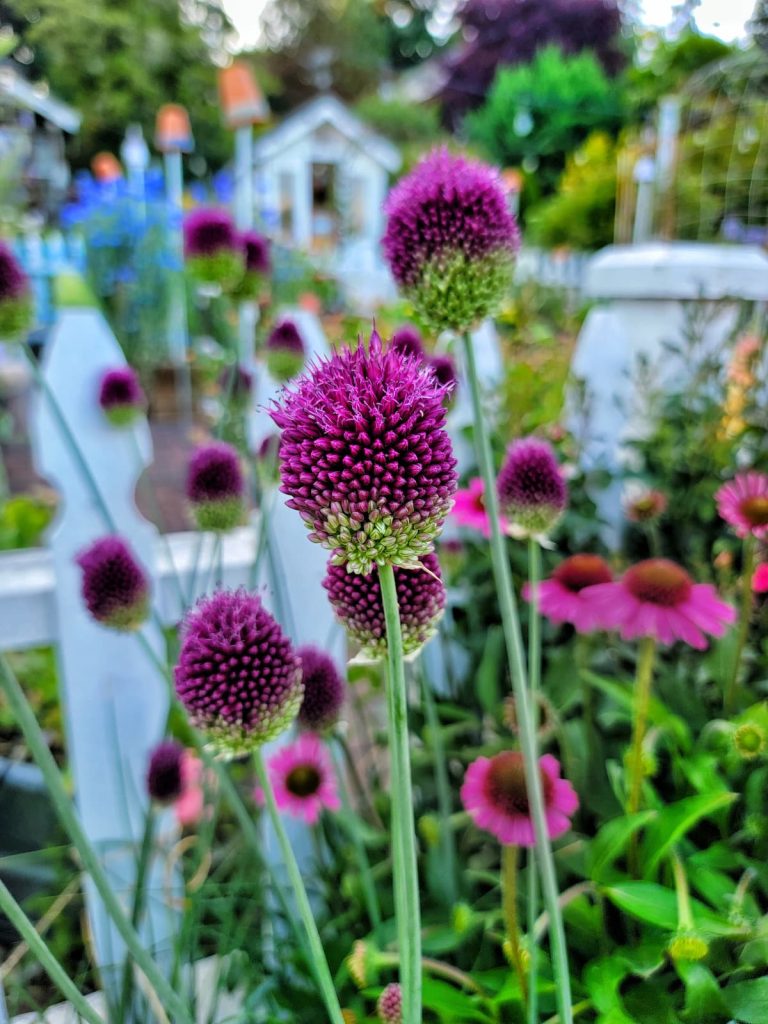
Allium, commonly known as ornamental onions, produces globe-like clusters of tiny star-shaped flowers on tall, slender stems. These create an eye-catching display ranging from a few inches to a foot in diameter.
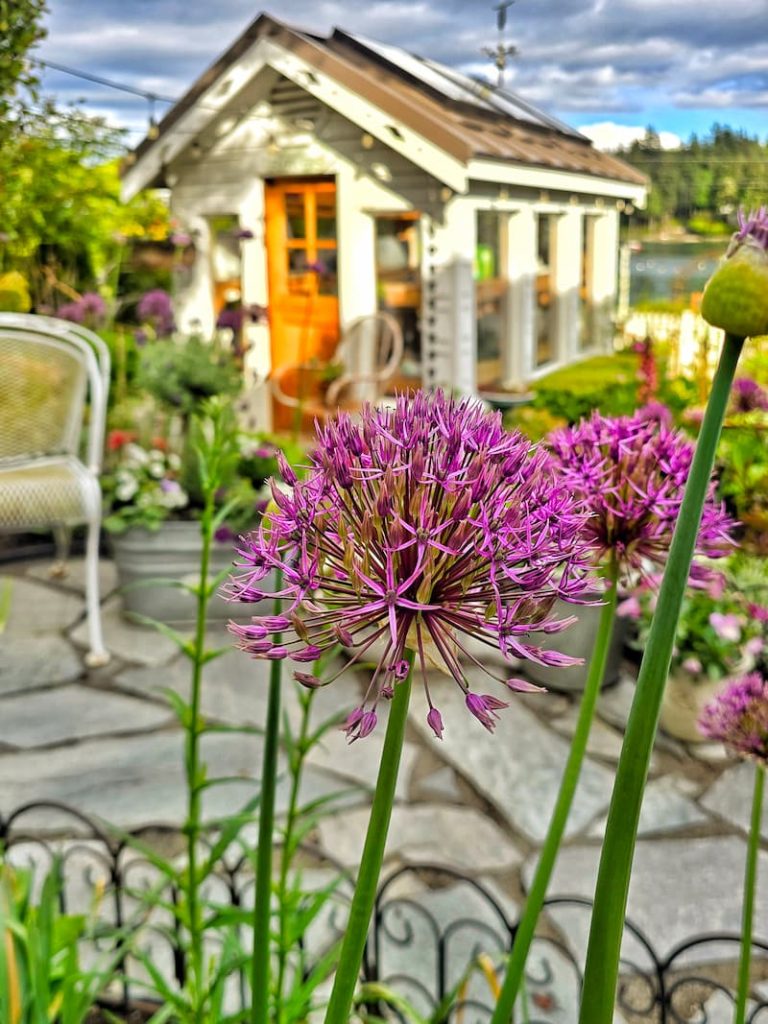
These hardy perennials typically bloom in late spring to early summer. They produce taller flowers that thrive in well-drained soil and full sun.
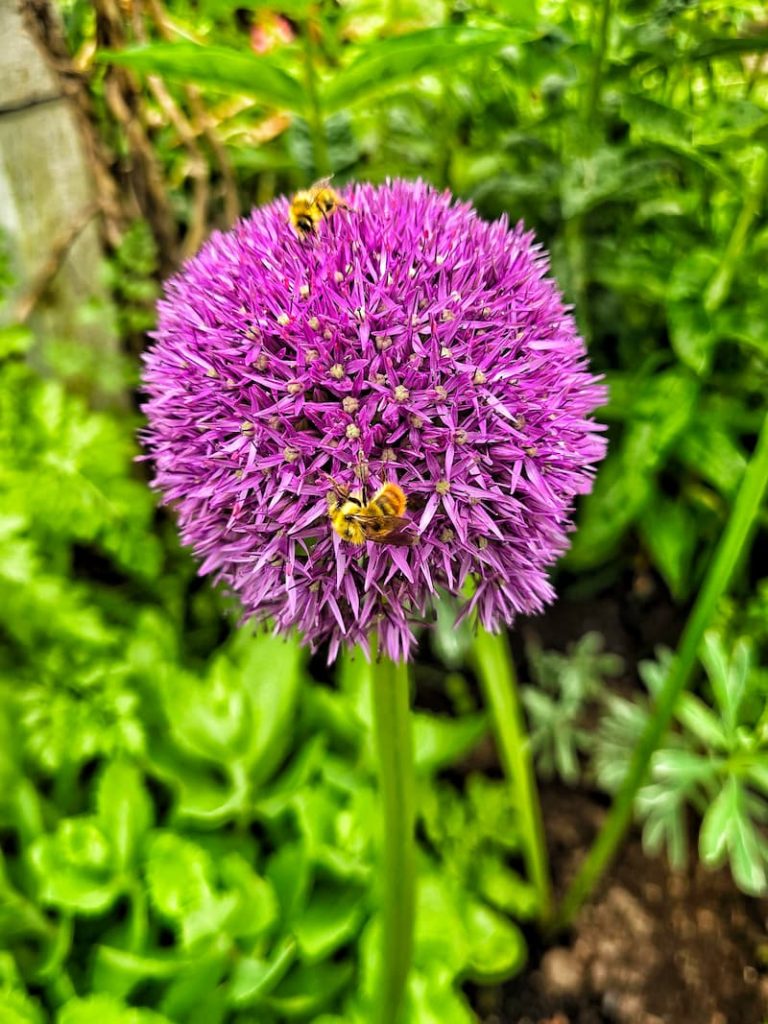
Once established, alliums are extremely low-maintenance and require little care. They are also deer—and rodent-resistant, making them a durable choice for many gardens.
Bees absolutely love allium and are found on these flower heads all day long.
Daisies
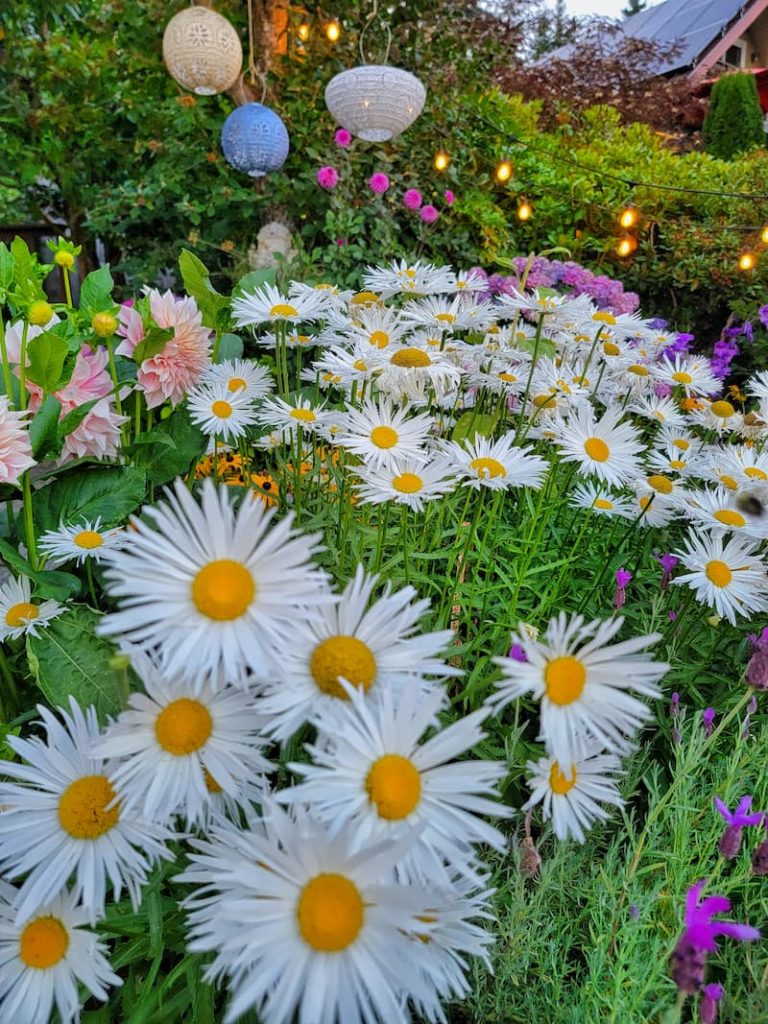
Daisies are classically cheerful summer flowers that bring a touch of charm and natural beauty to any garden.
These perennials typically feature white petals surrounding a bright yellow center, though they come in various colors and forms. These early summer favorites are incredibly versatile and easy to grow, thriving in various soil types and conditions, from full sun to partial shade.

Shasta daisies need support in the garden so they won’t fall over. It’s also a good idea to divide them when the plant clump gets too big.
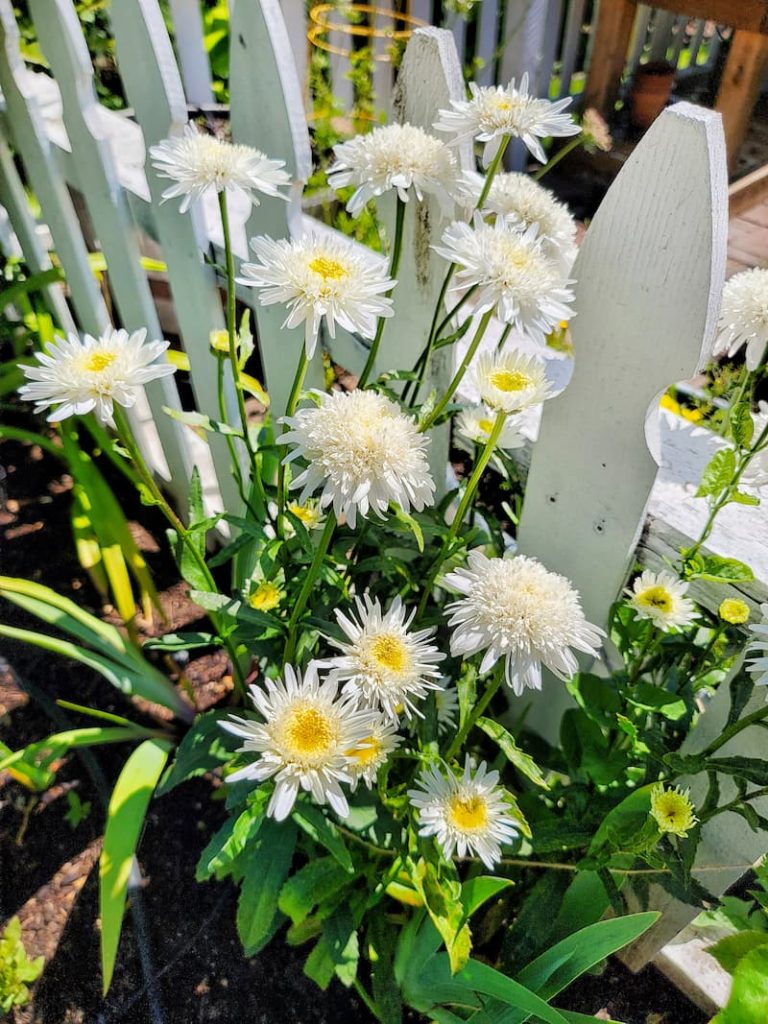
Daisies also benefit garden ecosystems, attracting pollinators such as bees, butterflies, and other beneficial insects. Their timeless beauty and easy-going nature make daisies a perennial favorite among gardeners of all skill levels.
Lavender
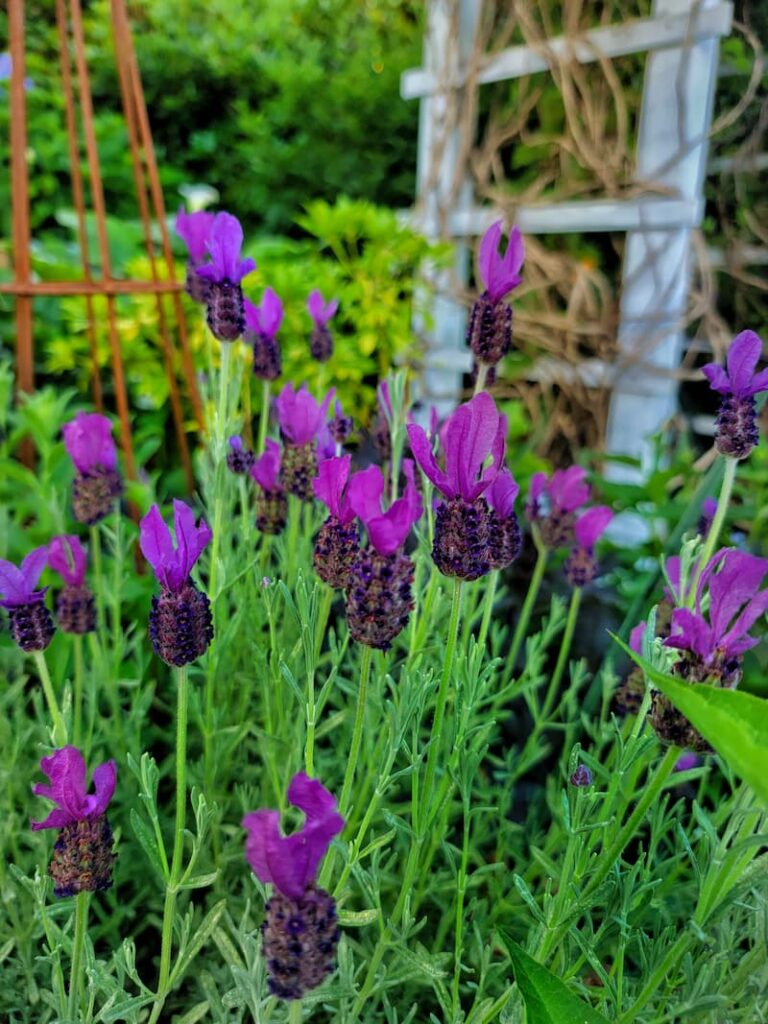
Lavender is a perennial herb known for its fragrant, silvery-green foliage and striking purple flower spikes that add a touch of tranquility to any garden.
From late spring to early summer, lavender flowers are visually appealing and highly aromatic, filling the air with a soothing and calming scent.
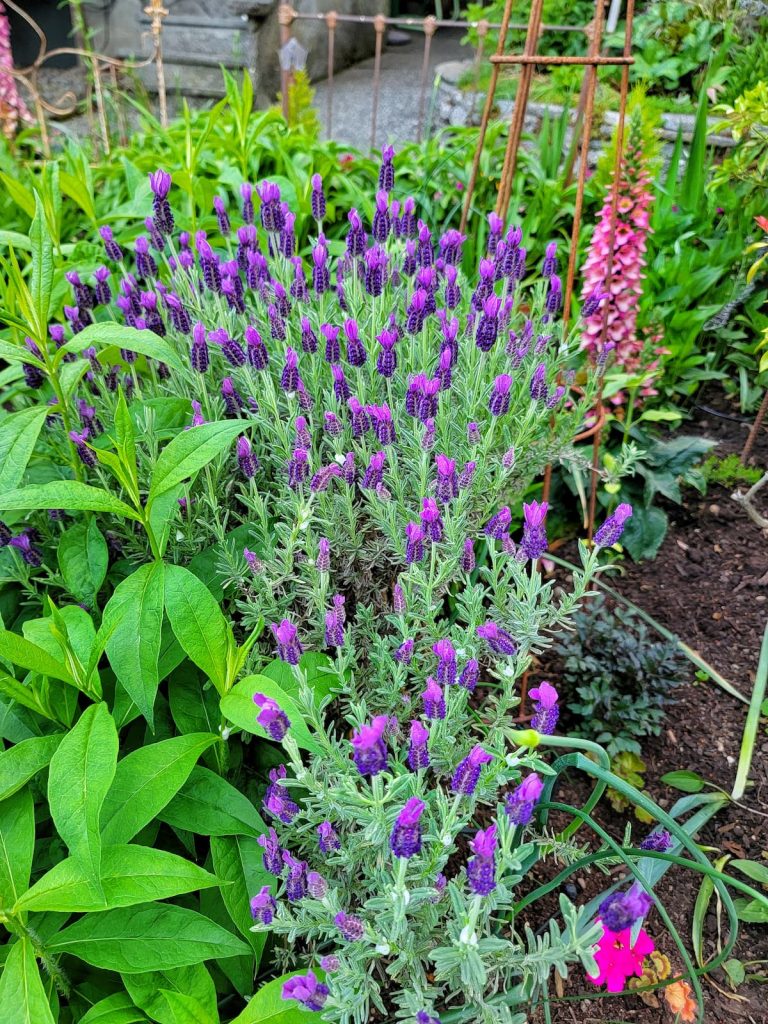
This versatile plant thrives in well-drained soil and full sun, making it a low-maintenance choice for gardeners. Once established, lavender is also drought-tolerant.
Beyond its ornamental value, lavender can be used for culinary purposes, herbal remedies, essential oils, and sachets. It attracts a variety of pollinators, including bees and butterflies.
Alstroemeria
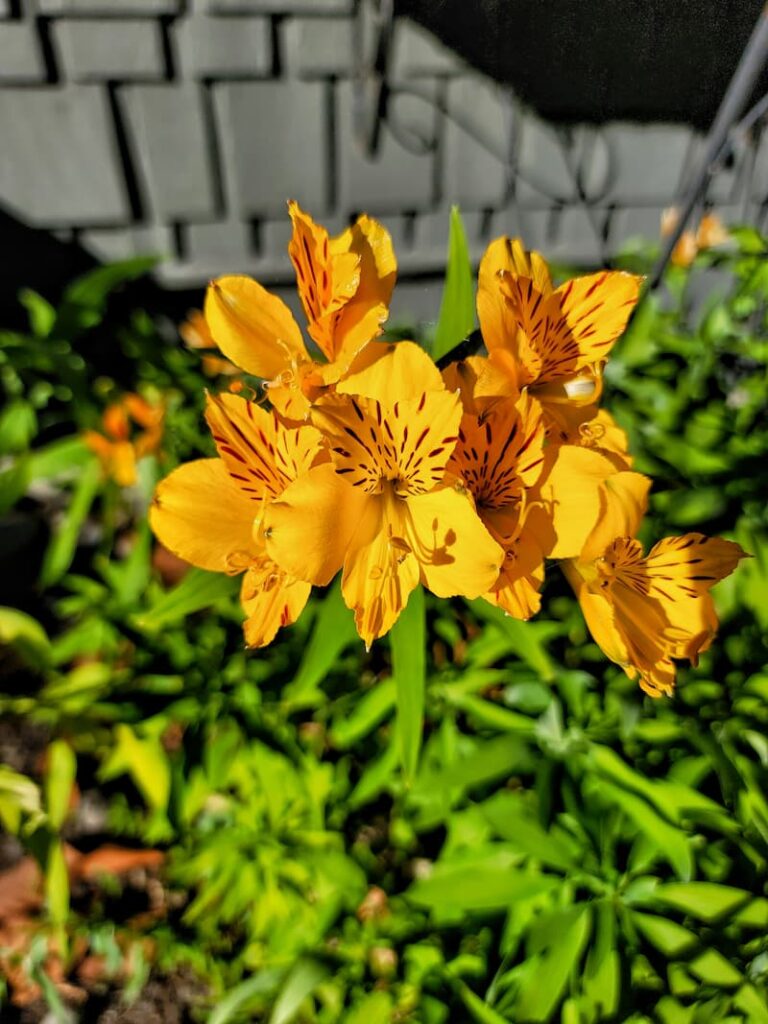
Alstroemeria, commonly known as the Peruvian lily or lily of the Incas, is a beautiful perennial that brings vibrant color and uniqueness to gardens and floral arrangements.
Loved for their distinctive streaks and long-lasting trumpet-shaped blooms, Alstroemeria flowers come in many colors, including shades of pink, purple, red, orange, yellow, and white.

These flowers typically bloom from late spring to early summer and continue to produce blossoms throughout the season, providing a continuous display of color.
Alstroemeria plants are relatively low-maintenance and thrive in well-drained soil and full sun to partial shade. They are also known for their strong, sturdy stems, making them ideal for cut flowers that can last up to two weeks in a vase, brightening any indoor space.
I have a love/hate relationship with Alstromeria. They are beautiful and long-lasting in any floral arrangement. However, they have been extremely invasive in my garden. Be sure to grow them in a garden space where they can be contained.
Veronica
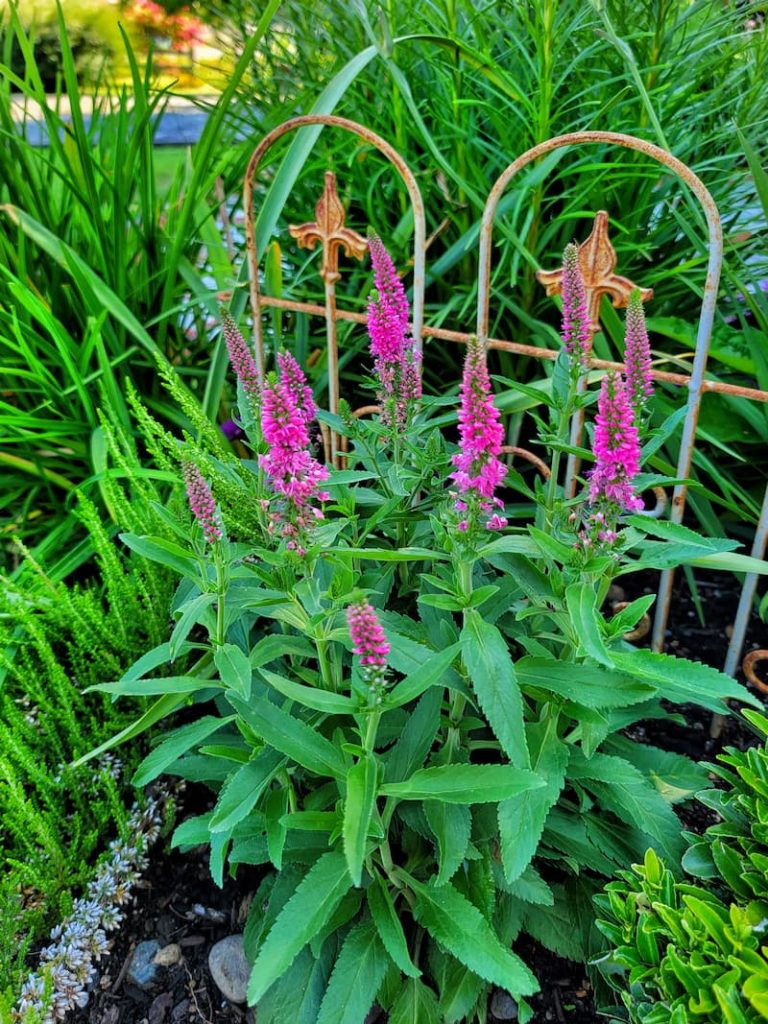
Veronica, also known as Speedwell, is a versatile perennial with spiky, upright flower clusters that add charm and color to gardens. The flowers are available in shades of blue, purple, pink, and white.
Blooming from late spring through summer, Veronica is a perfect choice for a pollinator-friendly landscape. This hardy plant thrives in well-drained soil and full sun to partial shade, making it a resilient and low-maintenance addition to any garden.
The Early Summer Cut Flower Garden
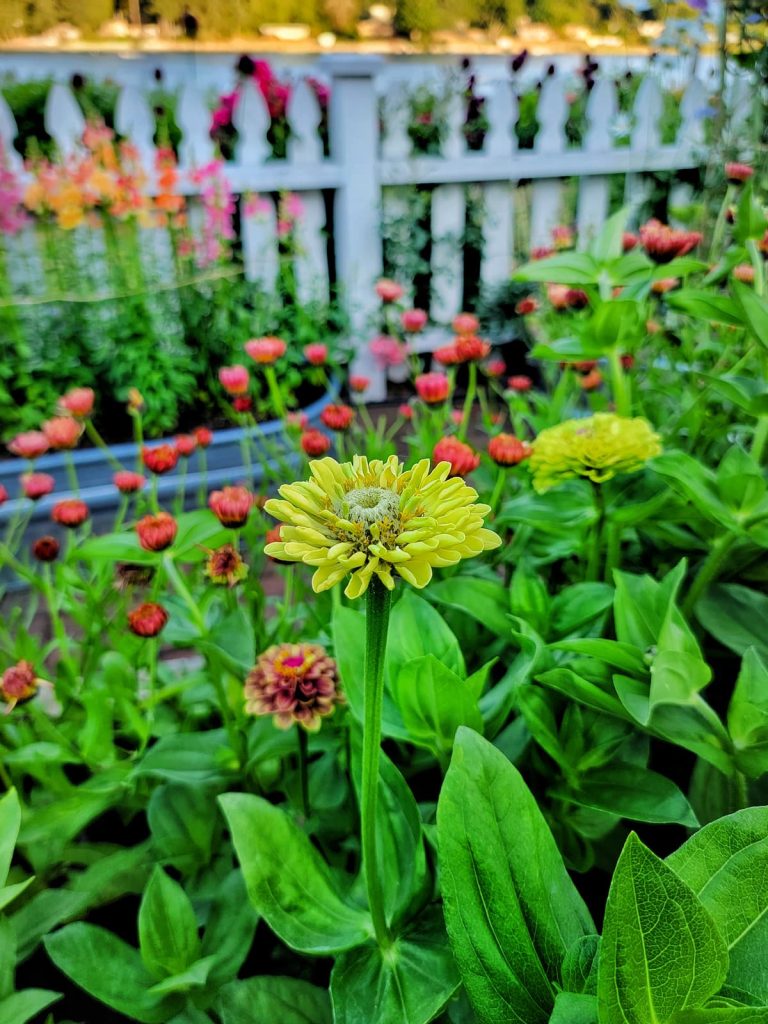
I start growing my summer annual flowers from seed in the greenhouse. The seedlings are transplanted to the cut flower garden after the last frost date in late April. If you’re unsure of when your average last frost date is, you can check by entering your zip code.
About the Cutting Garden
I’ve grown cut flowers for about five years and still learn something new every year. From watering the garden efficiently to protecting them from the excessive heat of summer, there’s so much to learn, but it’s so worth it!
I am growing vegetables along with my flowers in the raised garden beds. The tomatoes and zucchini do very well growing alongside the flowering plants. And they benefit from great pollination.
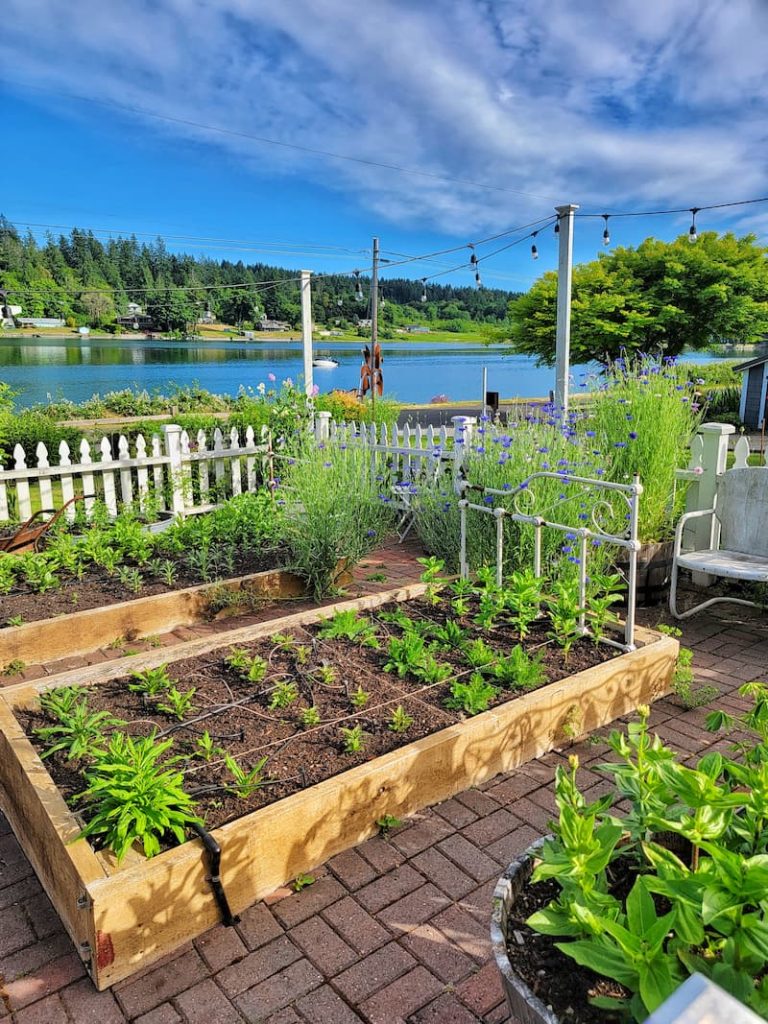
Our garden space has raised beds and containers and is in full sunlight. Two raised beds are 4’x4′, and two are 4’x8′. Everything is watered by a drip and sprinkler system on a timer. It has made my life so much easier!
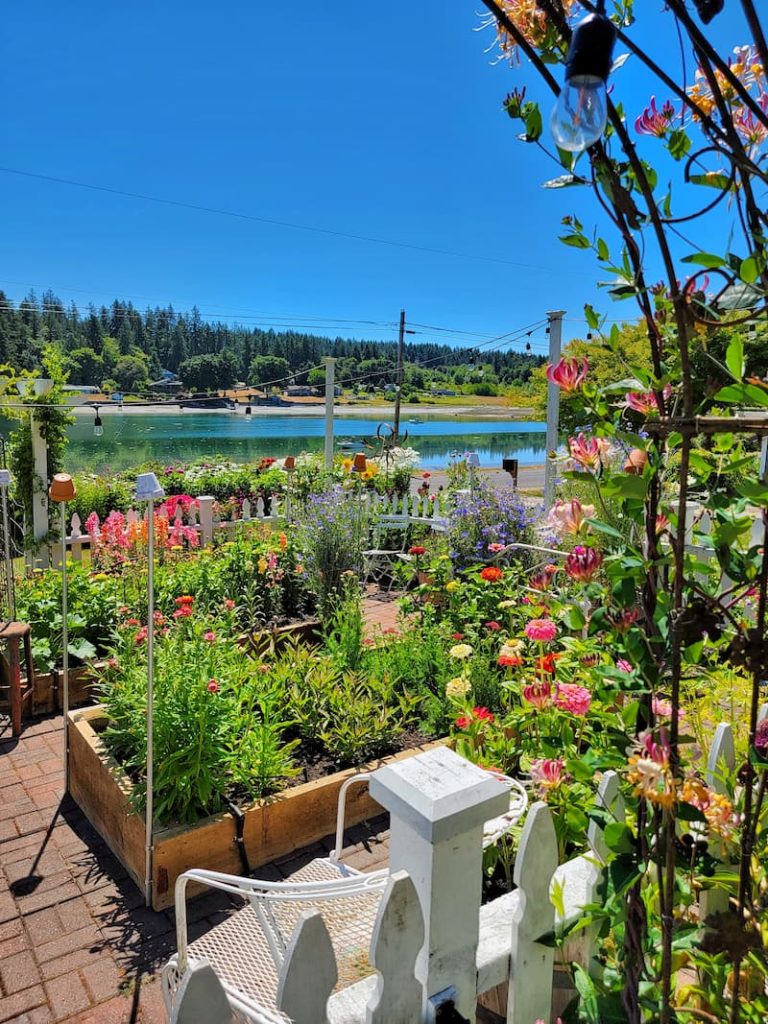
By the end of June, the garden looks more like the picture above.
It still isn’t quite in full bloom like in August, but cut flowers like zinnias, snapdragons, bachelor’s buttons, sweet peas, and some strawflowers were starting to flower.
Zinnias
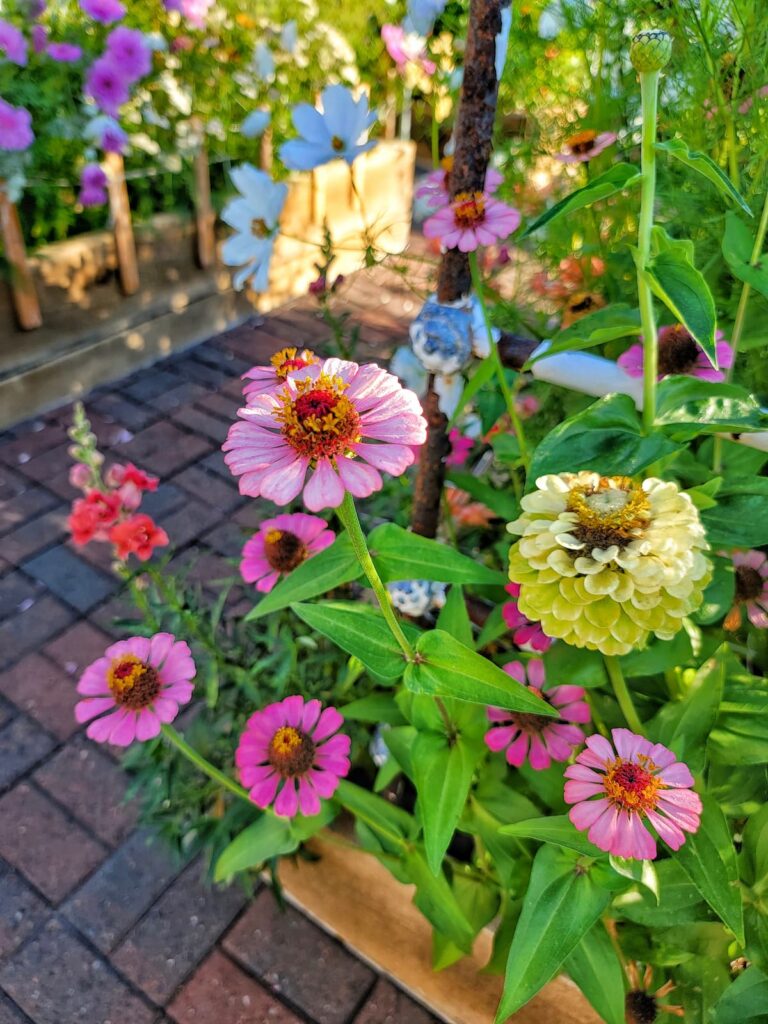
Zinnias are very popular cut flowers in the early summer garden. Their vibrant colors and long-lasting blooms make them a favorite choice for floral arrangements.
These annual flowers come in various colors, including red, pink, yellow, orange, purple, and white, as well as bi-color varieties.
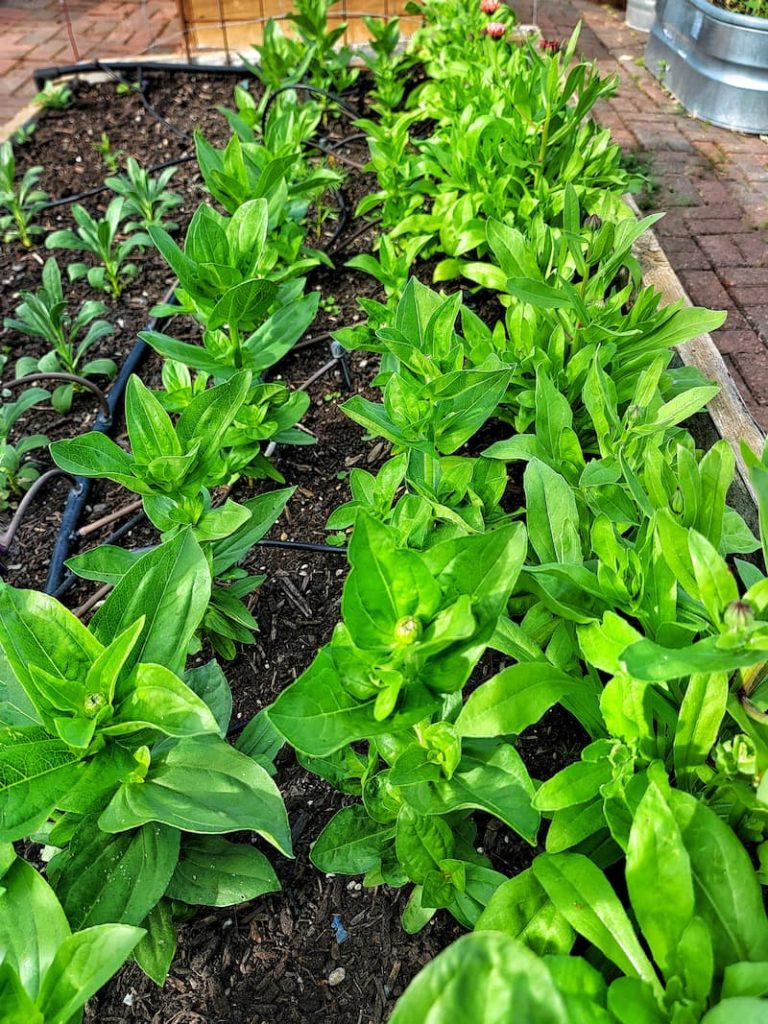
Zinnia seed germination is very quick. I saw sprouts popping out of the soil in just a few days.
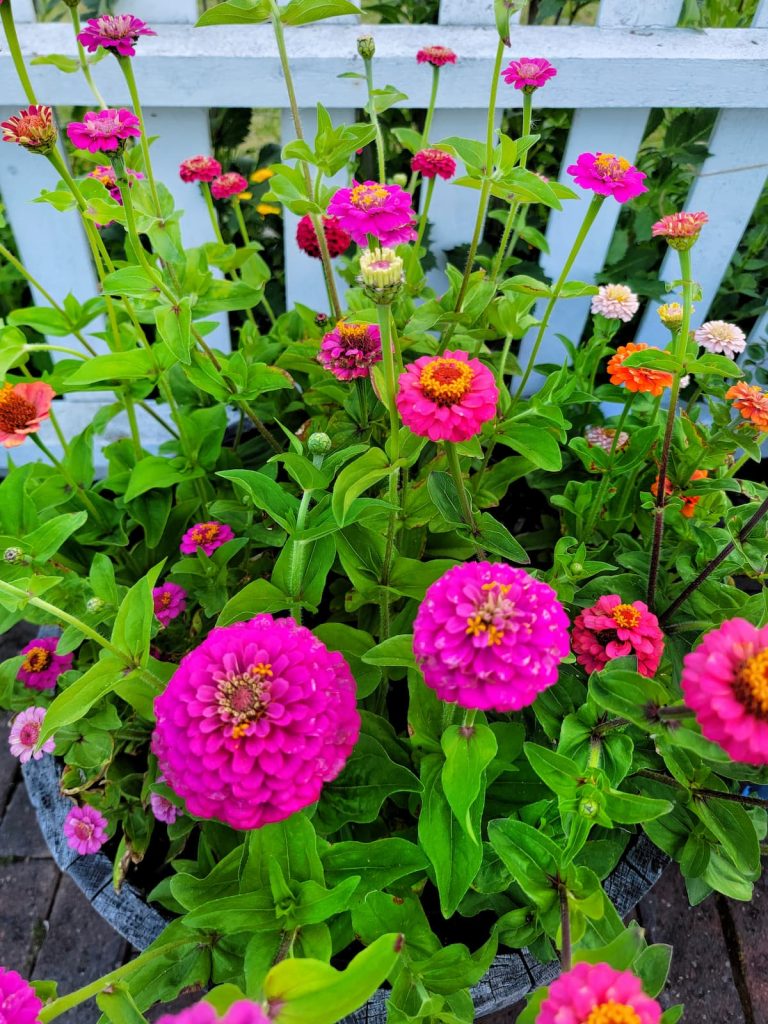
Zinnias have sturdy, straight stems that hold up well in vases, and their flowers can last up to two weeks when cut.
They are also easy to grow and thrive in well-drained soil with full sun, making them a reliable source of blooms throughout the summer and into early fall.

These cut-flower annuals attract butterflies and other pollinators.
Sunflowers
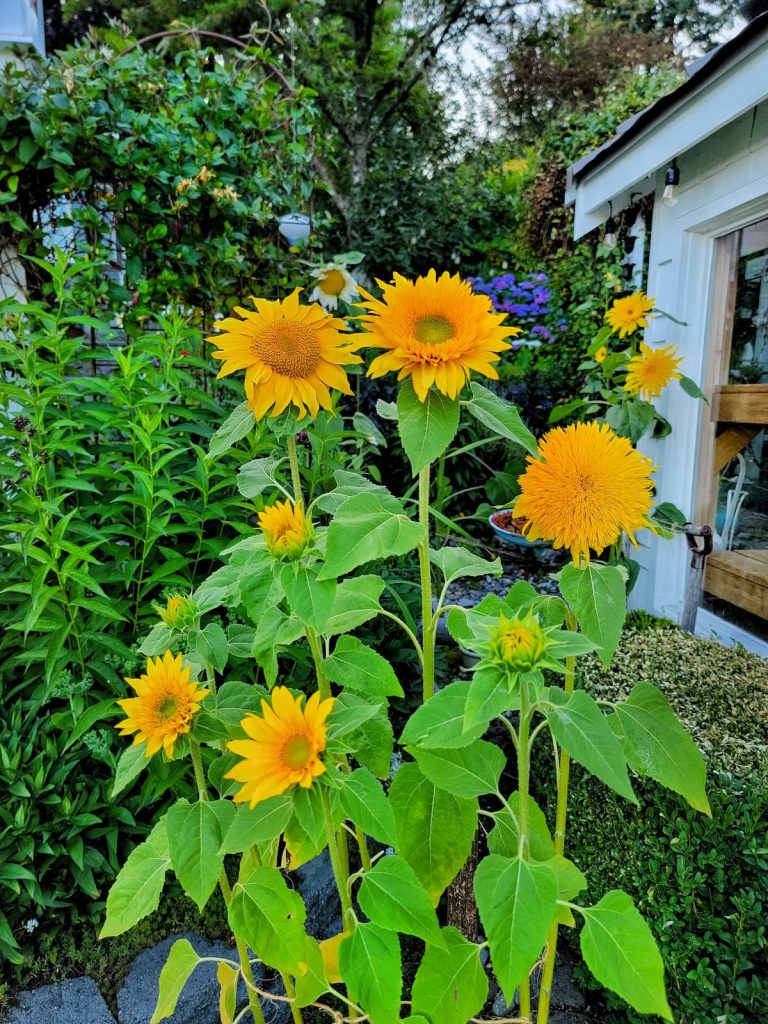
Known for their large, bright yellow blooms with dark centers, sunflowers exude a sunny, uplifting energy that can brighten any indoor space.
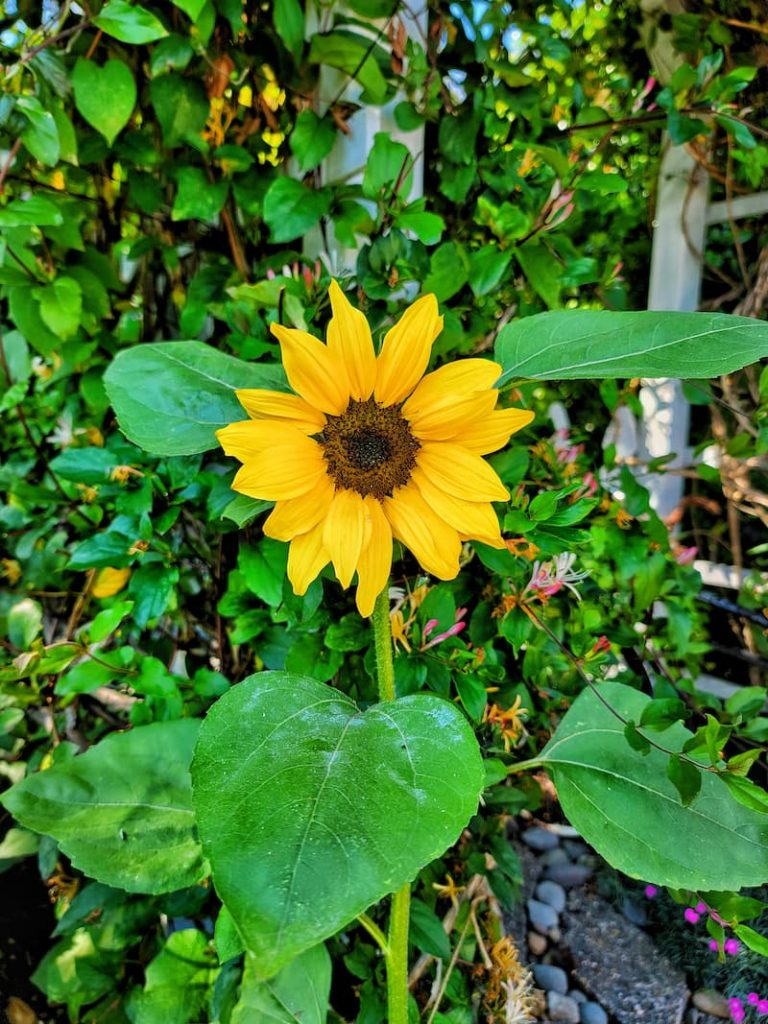
They come in various sizes and even in different colors, including shades of orange, red, and bi-colored varieties, offering versatility for diverse floral designs.
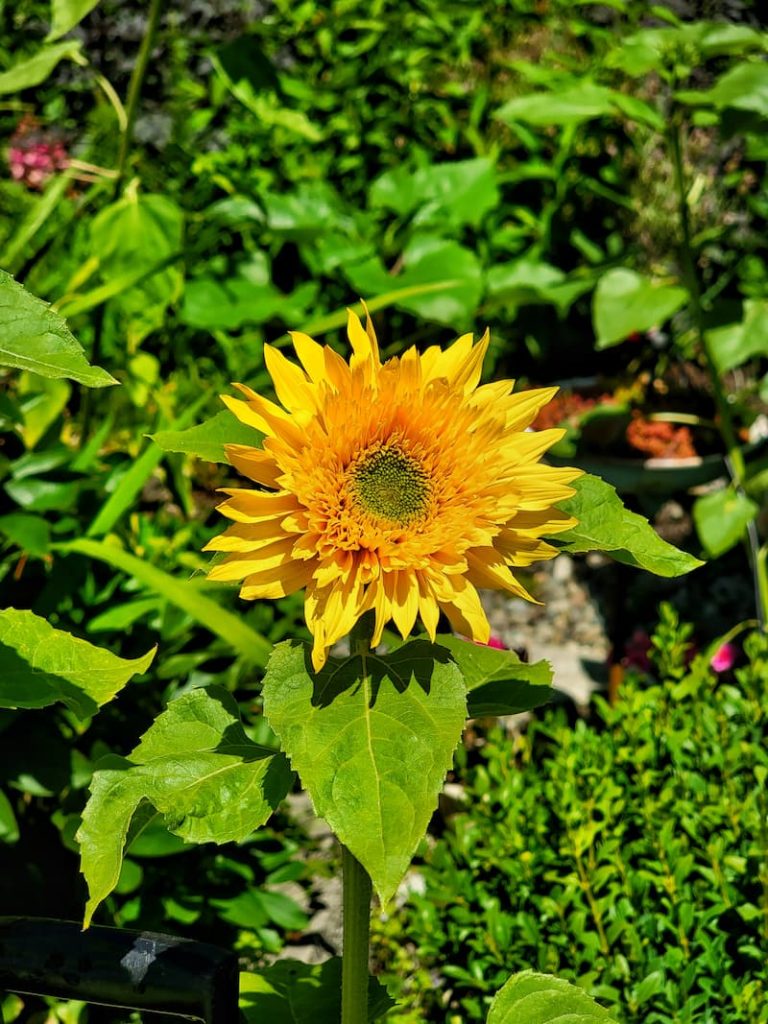
Sunflowers have sturdy, thick stems that support their substantial flower heads, ensuring they stand tall and vibrant in vases. When properly cared for, sunflower stems can last up to two weeks as cut flowers.
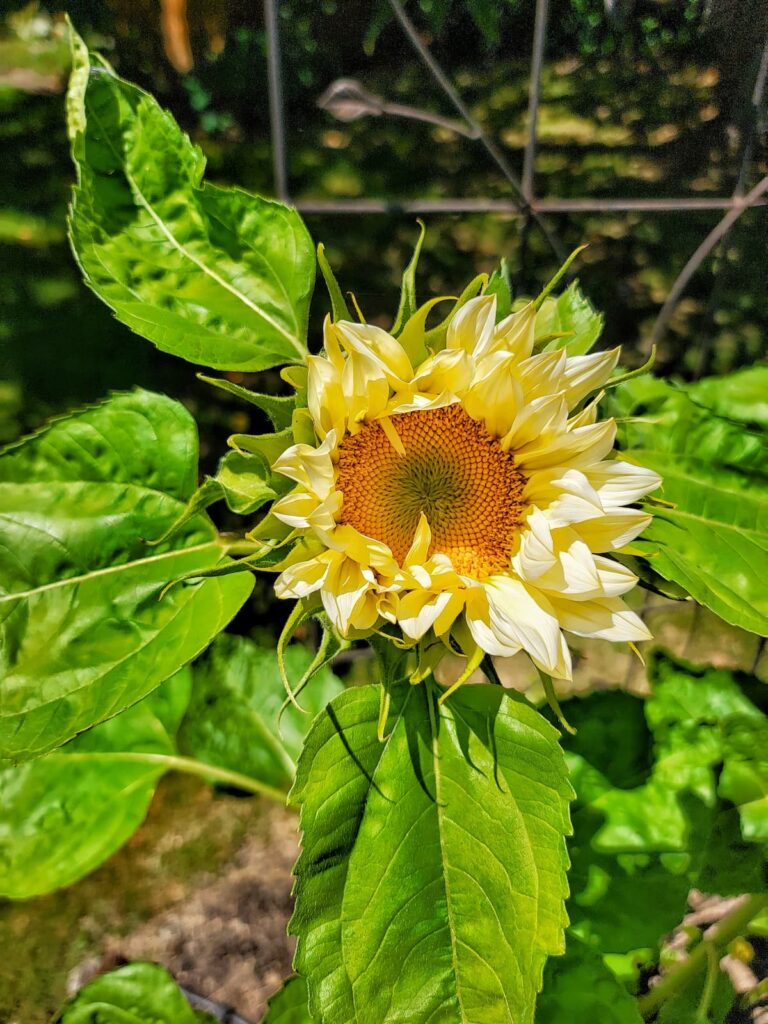
They thrive in well-drained soil and full sun, making them easy to grow from summer into early fall. Sunflowers attract pollinators like bees and butterflies.
Snapdragons
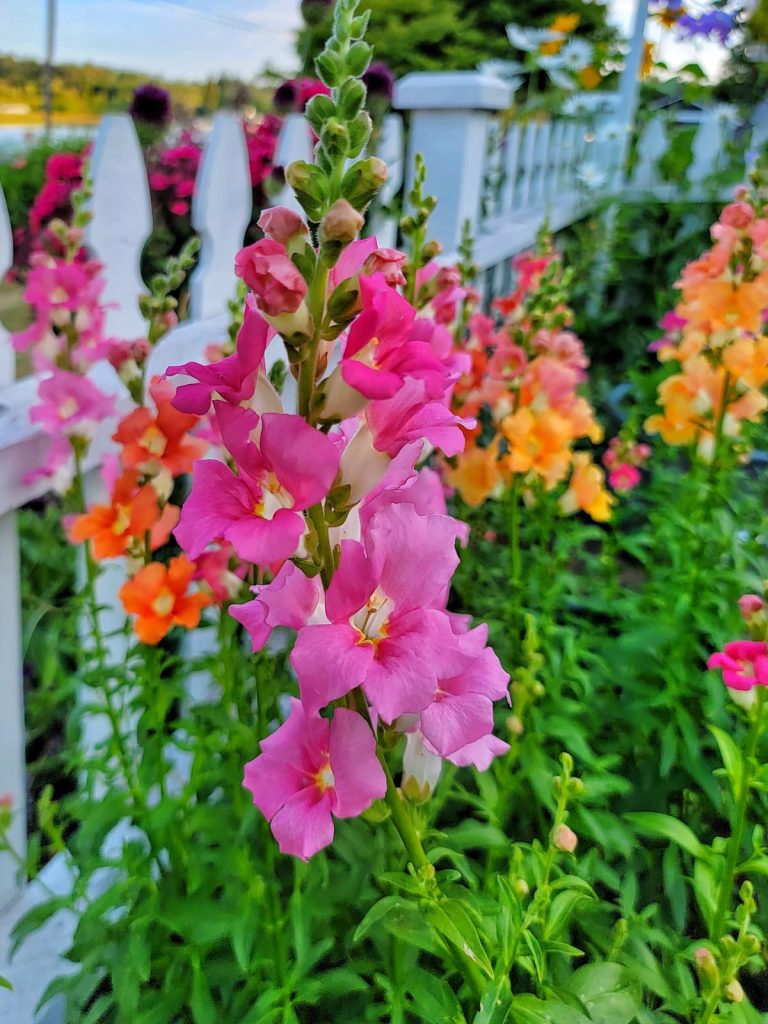
With their unique, dragon-shaped blooms and vibrant colors, Snapdragons are a charming choice for cut flowers. They add a touch of whimsy and elegance to floral arrangements.
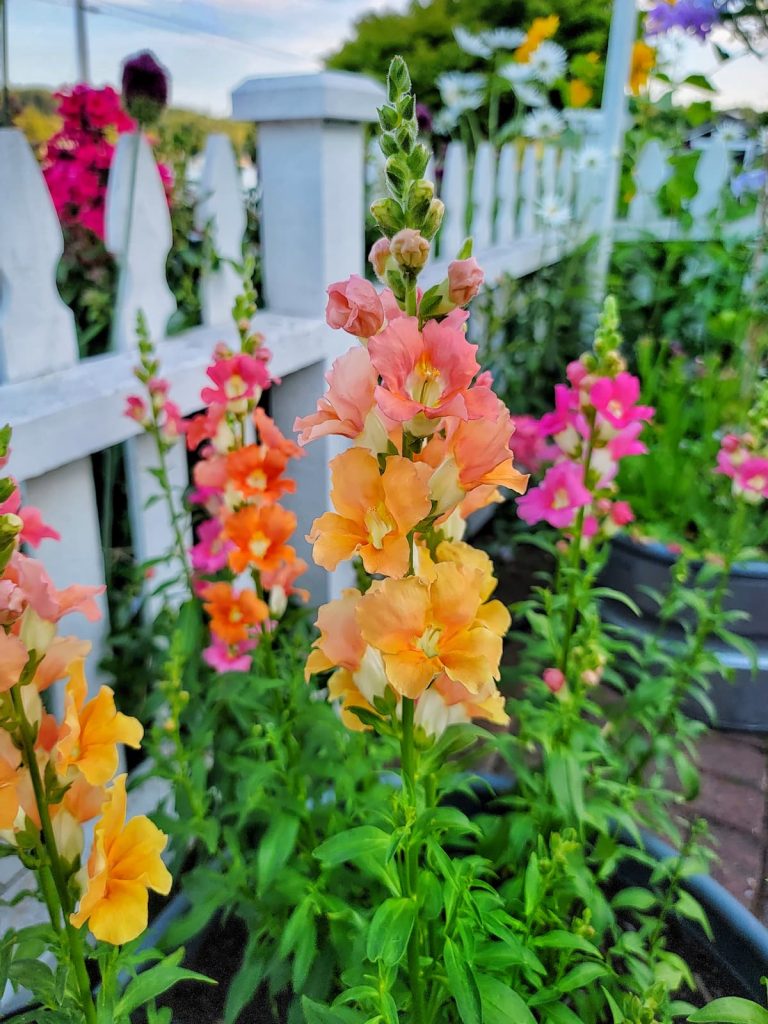
These beautiful flowers come in a wide spectrum of colors, including shades of pink, red, yellow, orange, white, and purple, as well as bi-colored varieties.
Snapdragons have tall, sturdy stems that hold up well in vases, and their long-lasting blooms can last up to ten days when cut.
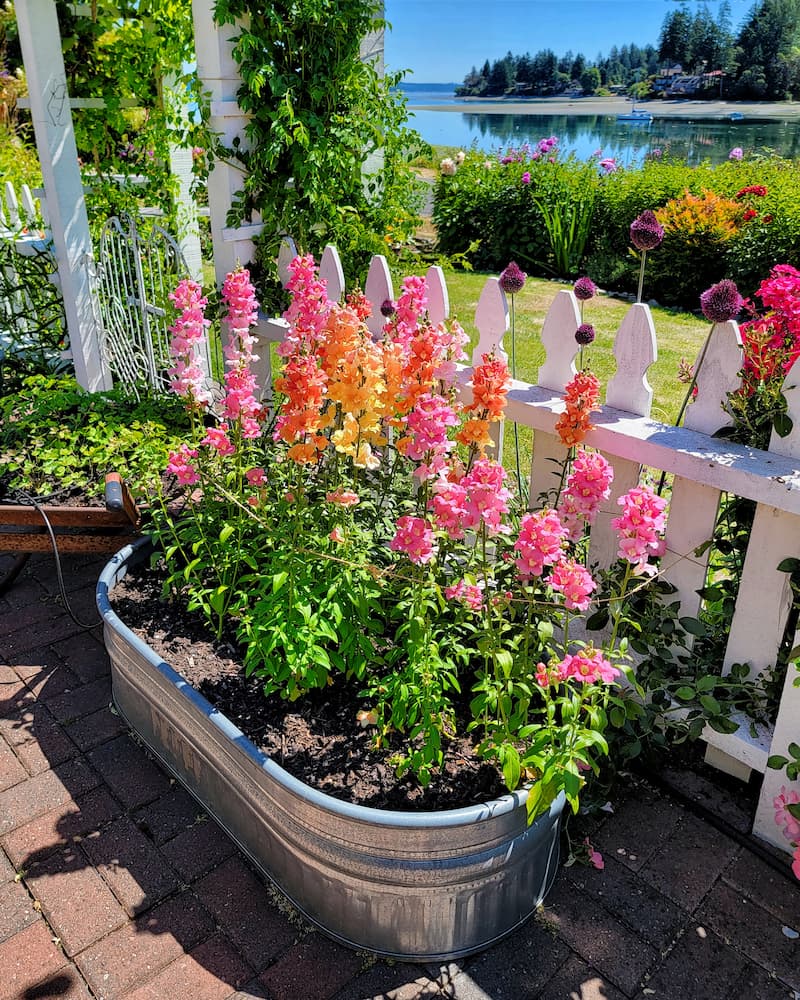
They thrive in well-drained soil and full sun to partial shade, making them easy to grow and a reliable source of blooms from spring through early fall.
Snapdragons also attract pollinators like bees and butterflies. Their distinctive, tubular flowers add vertical interest and texture to bouquets, making them a favorite among florists and gardeners.
Cosmos
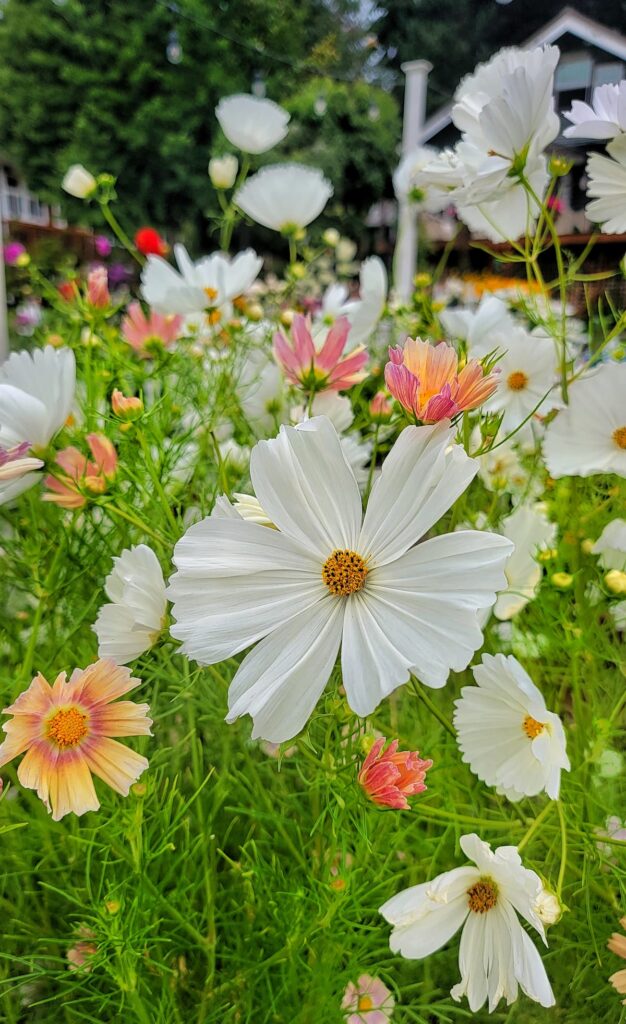
Cosmos are wonderfully whimsical cut flowers in the garden. Their delicate, daisy-like blooms and airy, fern-like foliage add a touch of charm to floral arrangements.
They thrive in well-drained soil and full sun, making them easy to grow.
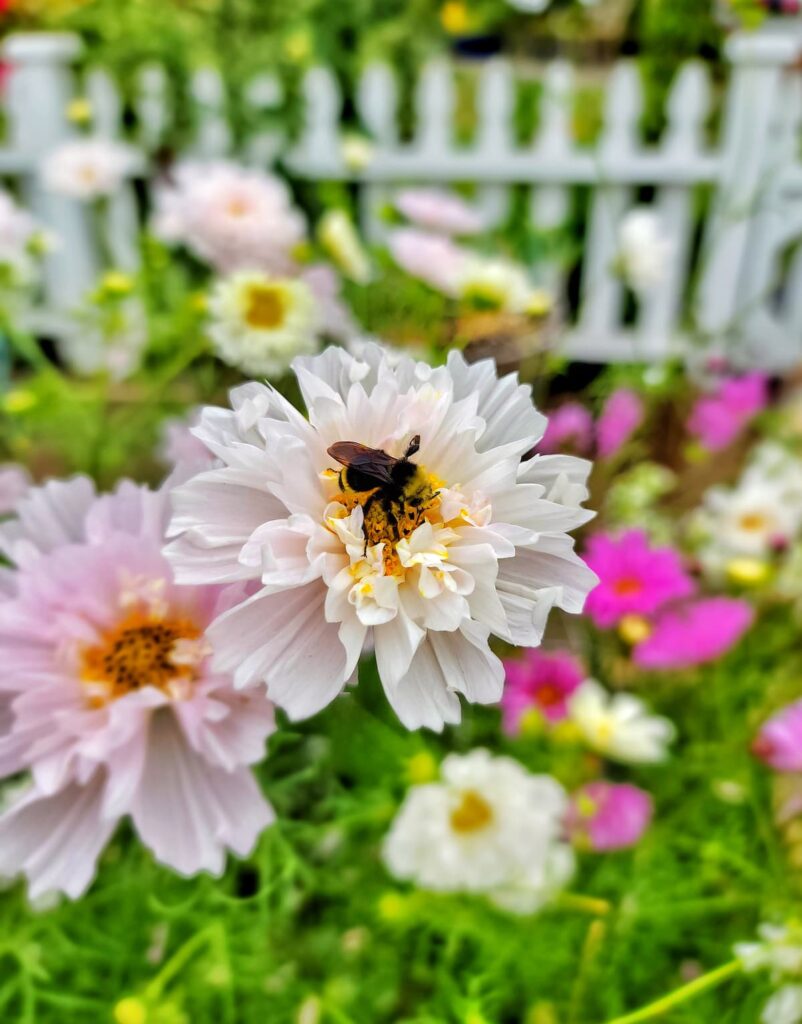
These cheerful annuals have almost a carefree, wildflower vibe and attract pollinators to the garden. They come in pretty colors, including shades of pink, white, red, and purple, creating a soft and romantic palette for bouquets.
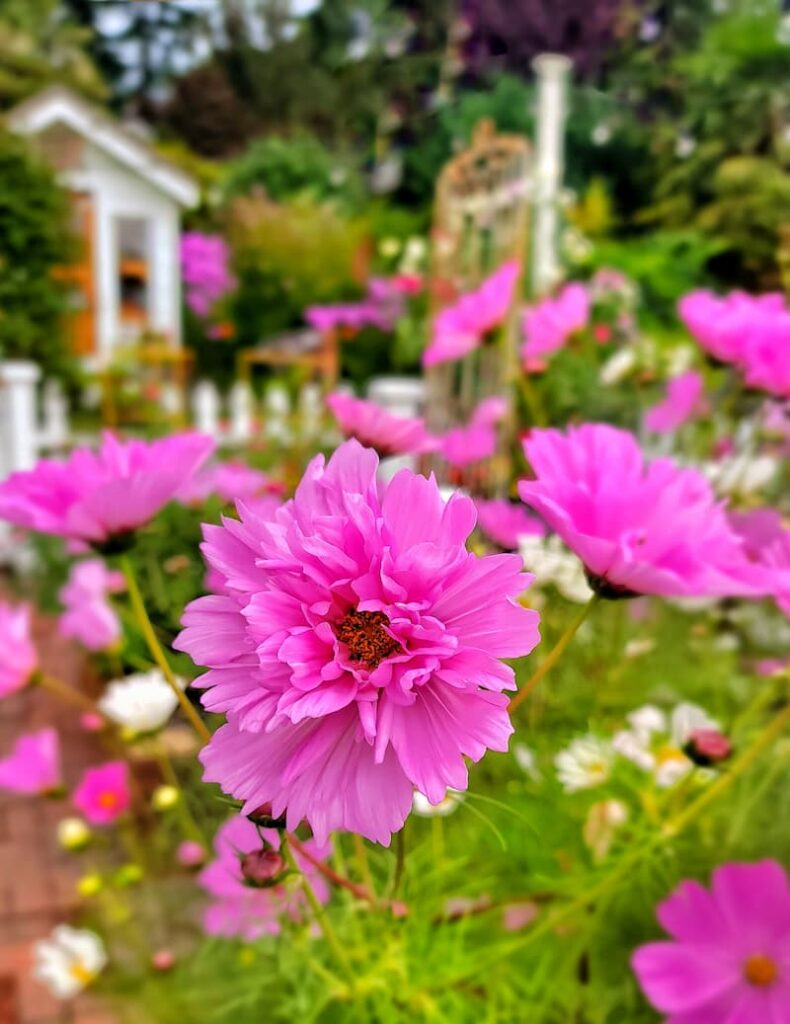
Cosmos have long, slender stems that are perfect for cutting. When properly cared for, they can last up to a week in a vase.
Strawflower
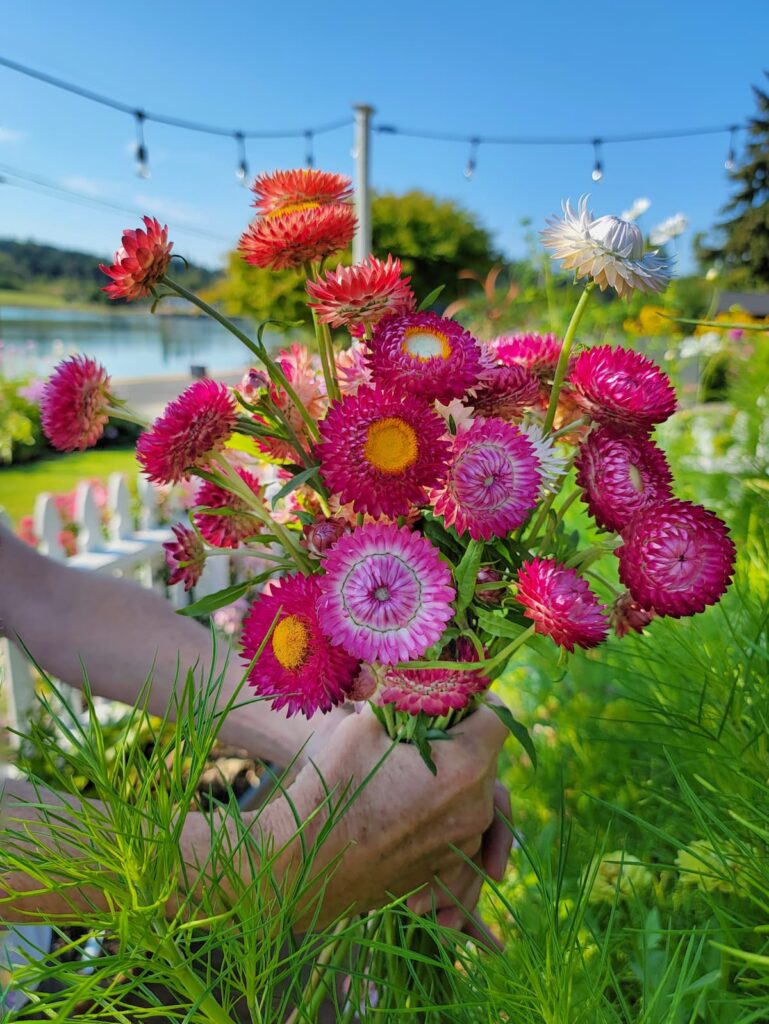
Strawflowers, also known as Helichrysum, have a unique, papery texture and incredible longevity.
These flowers come in shades of yellow, orange, red, pink, and white, often with contrasting centers that add depth and visual interest to arrangements.
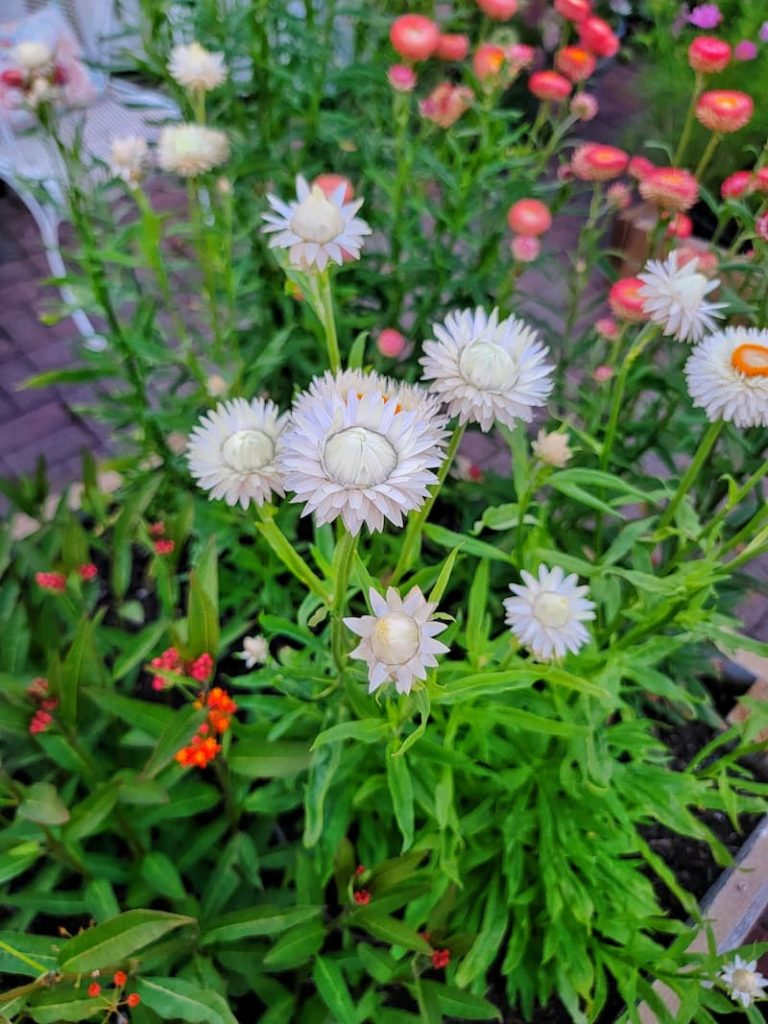
Strawflowers have stiff, durable stems that make them easy to work with in floral designs. Their blooms can last for weeks, retaining their bright colors and forming fresh and dried. This makes them a favorite for creating long-lasting bouquets and dried floral arrangements.
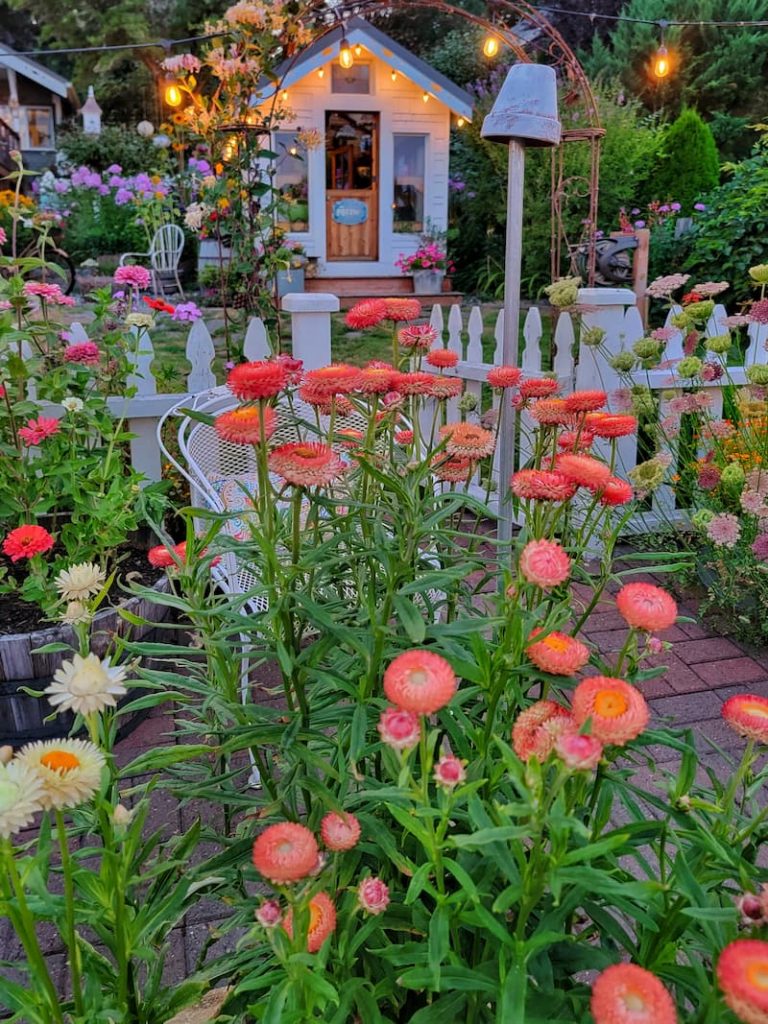
They thrive in well-drained soil and full sun, producing abundant blooms from late spring through fall. Strawflowers attract pollinators such as bees and butterflies.
Sweet Peas
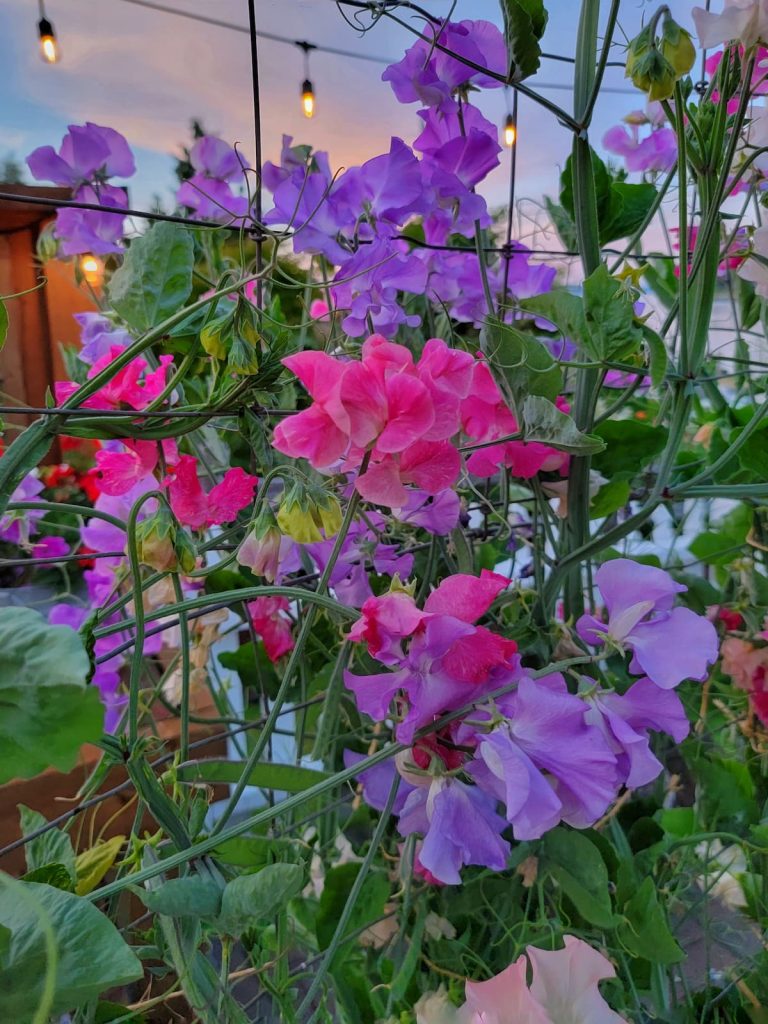
These old-fashioned annuals come in soft pastels and vibrant pinks, purples, whites, and reds. Their sweet-smelling fragrance and delicate, ruffled blooms bring a touch of romantic elegance to floral arrangements.
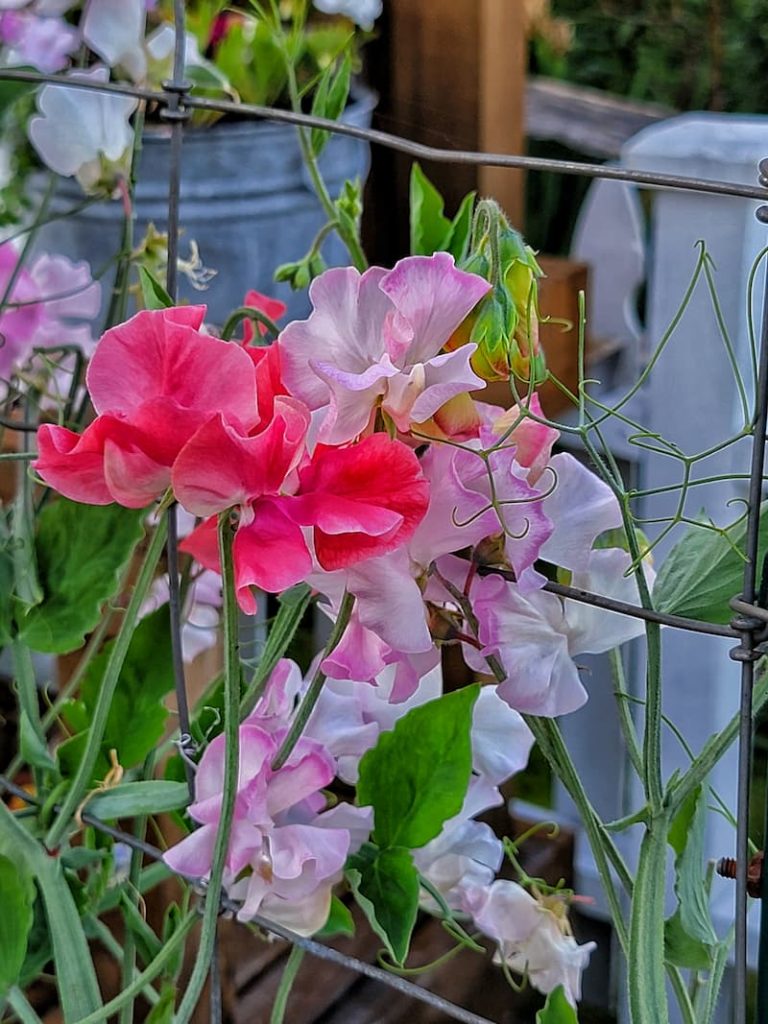
Sweet peas have slender, threadlike stems. If properly cared for, their flowers can last up to a week in a vase, filling the room with their sweet, captivating scent.
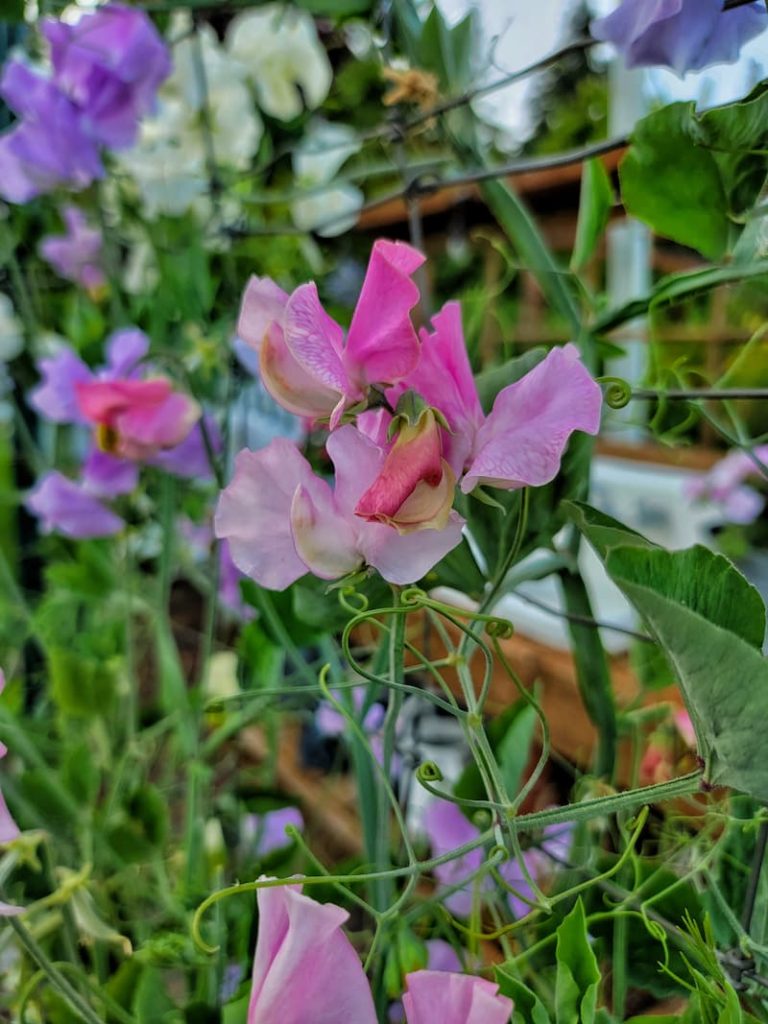
This delicate flower thrives in well-drained soil and prefers cooler growing conditions. It often blooms in late spring to early summer.
Sweet peas are also popular because they climb, making them ideal for growing on trellises, arbors, or garden fences.
Statice
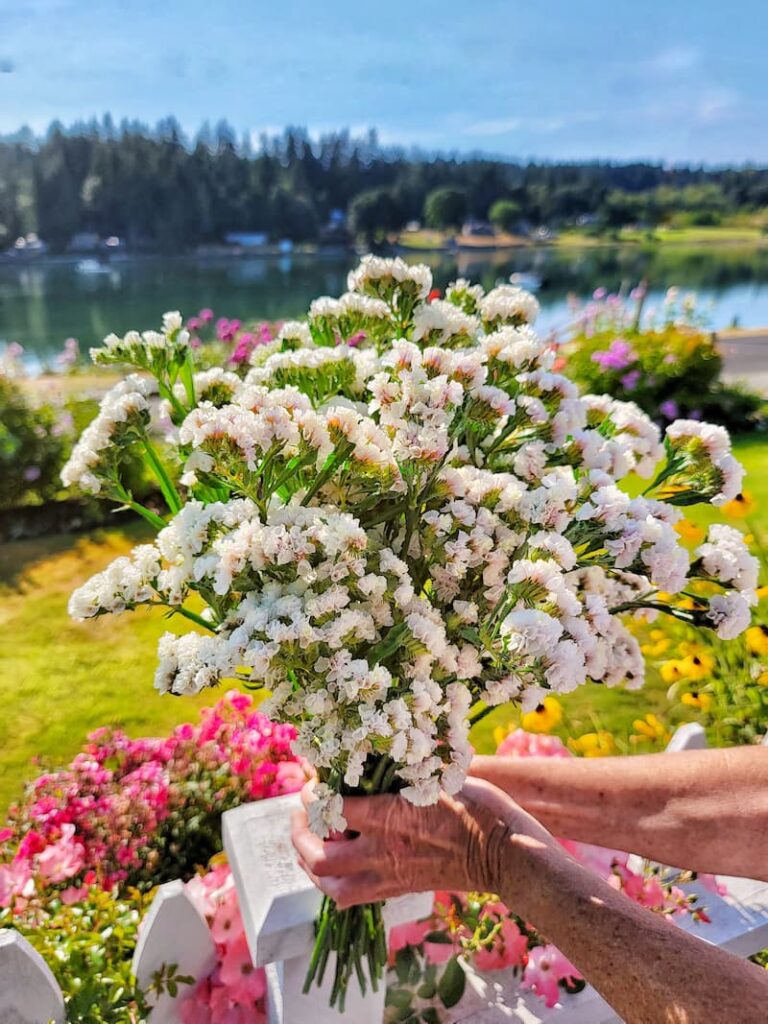
Statice flowers have amazing longevity, both fresh and dried. These hardy annuals and perennials produce clusters of small, papery flowers in shades of purple, pink, white, yellow, and blue, creating a vivid and textured addition to any floral arrangement.
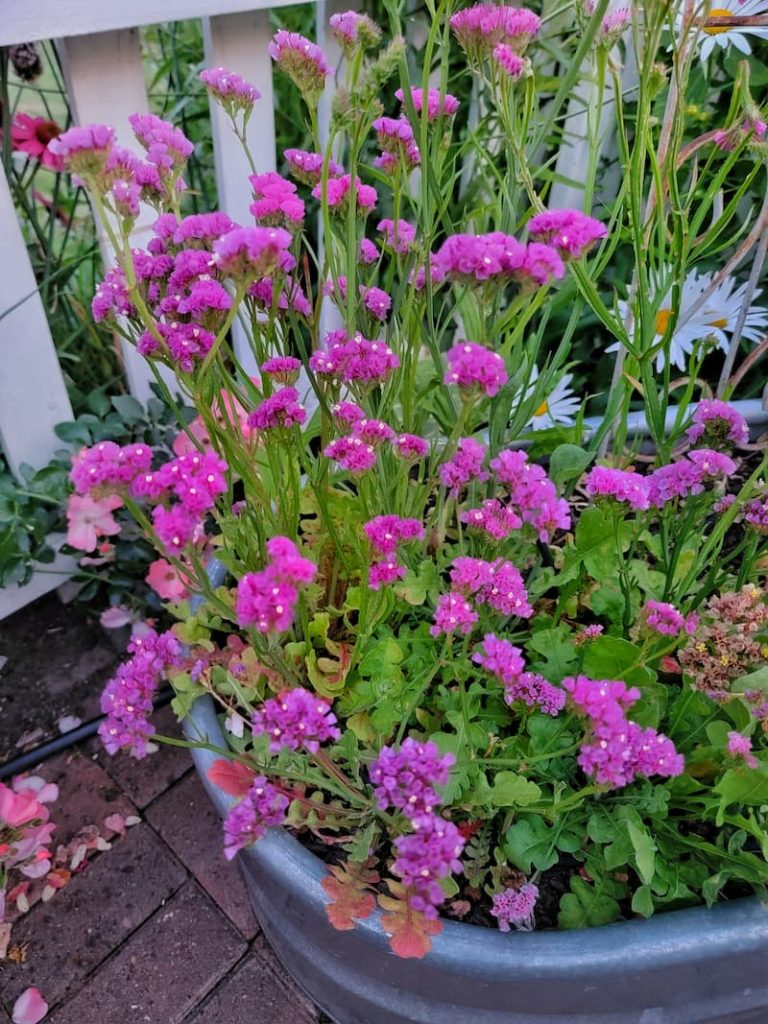
Statice has sturdy stems that support its dense blooms, making it easy to handle and arrange in vases. When dried, the flower retains its color and shape, making it a favorite for dried flower crafts, wreaths, and everlasting bouquets.
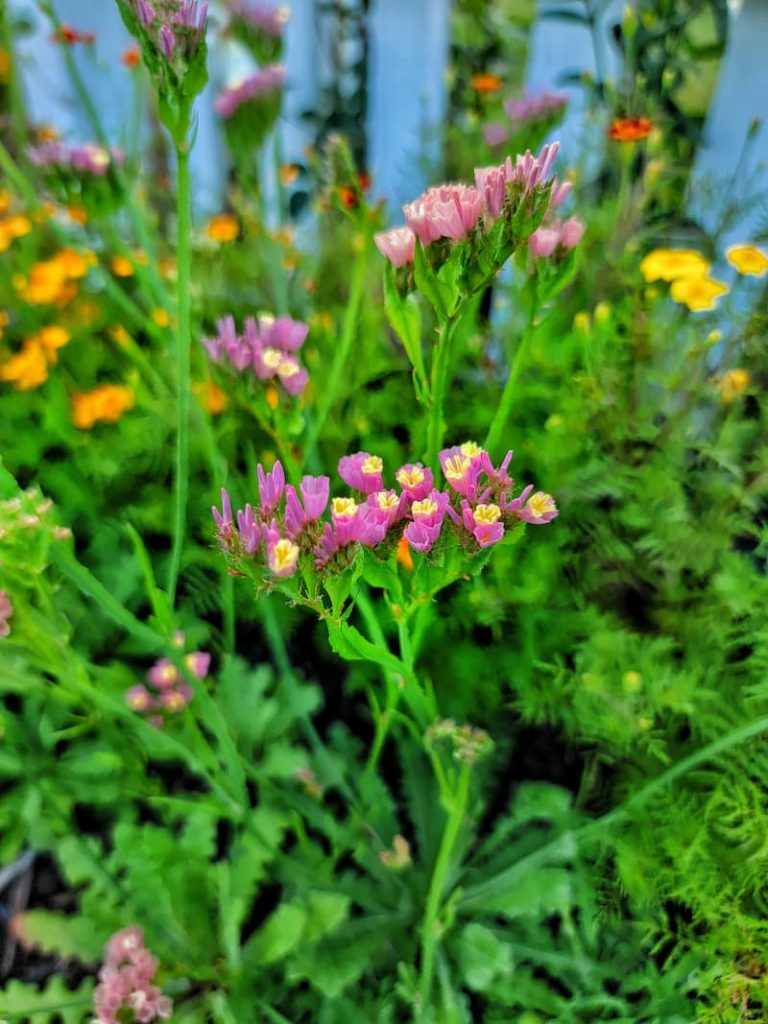
Thriving in well-drained soil and full sun, statice plants are easy to grow and provide a steady supply of blooms from mid-summer through fall.
Their resilience and low-maintenance nature make them a reliable choice for both novice and experienced gardeners. Statice also attracts pollinators such as bees and butterflies.
Cut Flower Volunteers
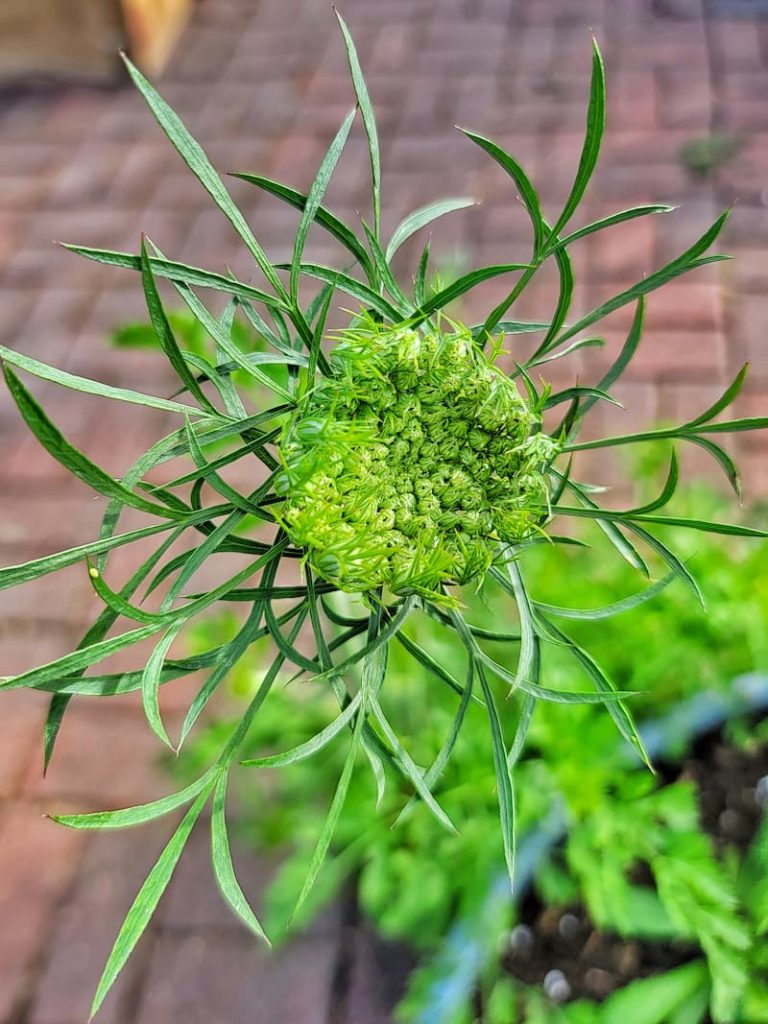
A volunteer flower in the garden is like a surprise gift from nature. It’s a plant that grows independently without being intentionally planted by a gardener.
These flowers are usually the result of seeds dropped by previous plants or carried by the wind or birds. Here are a couple of huge surprises growing in my cut flower garden in early summer.
Chocolate Lace Flower Dara
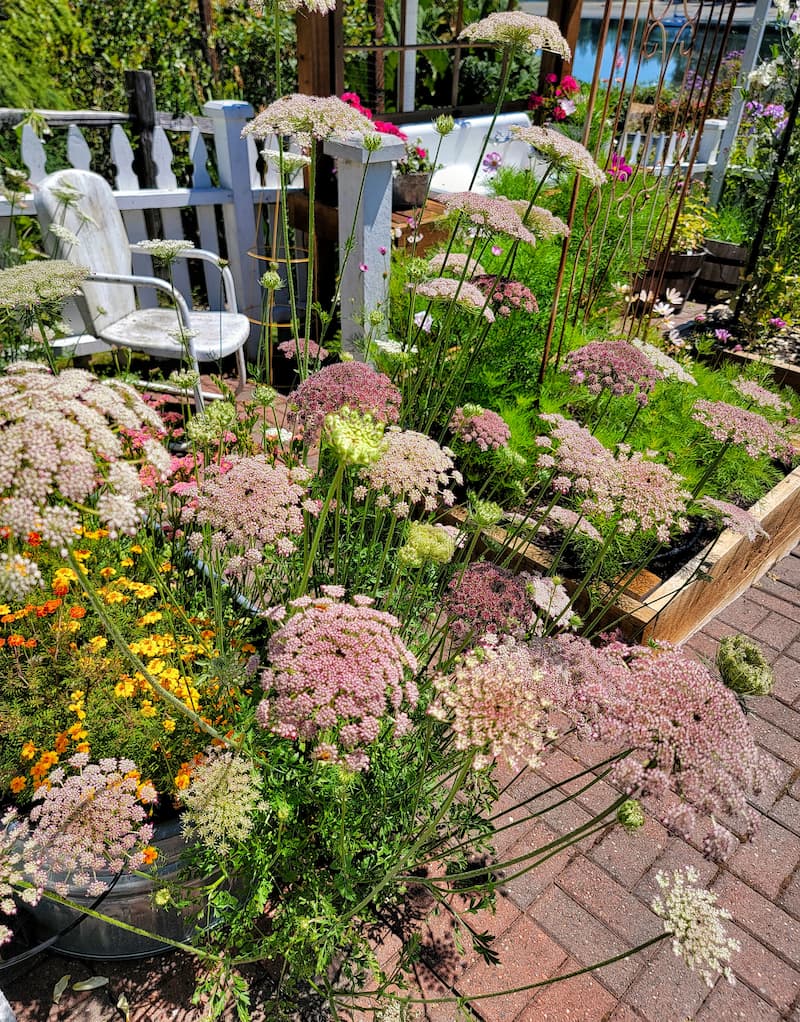
The Chocolate Lace Flower, also known as Dara or Daucus carota ‘Dara,’ has complex, lacy blooms and rich, earthy hues.
This unique variety of Queen Anne’s Lace has delicate, airy flowers that range in color from deep burgundy and chocolate to soft pink and creamy white. These flowers add an elegant, vintage charm to floral arrangements and are beloved for their long vase life, maintaining their beauty for up to a week.
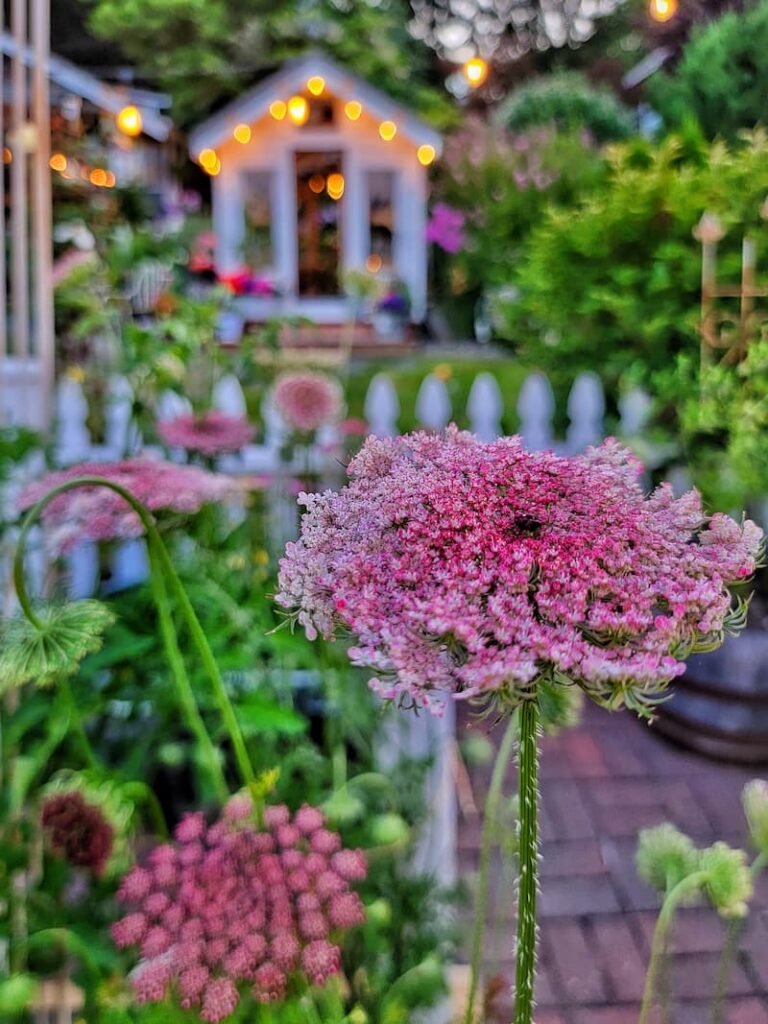
Chocolate Lace Flowers can self-seed in the garden year after year. Once established, they reseed themselves, reducing the need for replanting and creating a self-sustaining display of blooms.
Thriving in well-drained soil and full sun to partial shade, Dara is easy to grow and requires minimal maintenance. Its delicate, feathery foliage and striking flower heads attract beneficial pollinators like bees and butterflies.
Bachelor’s Button
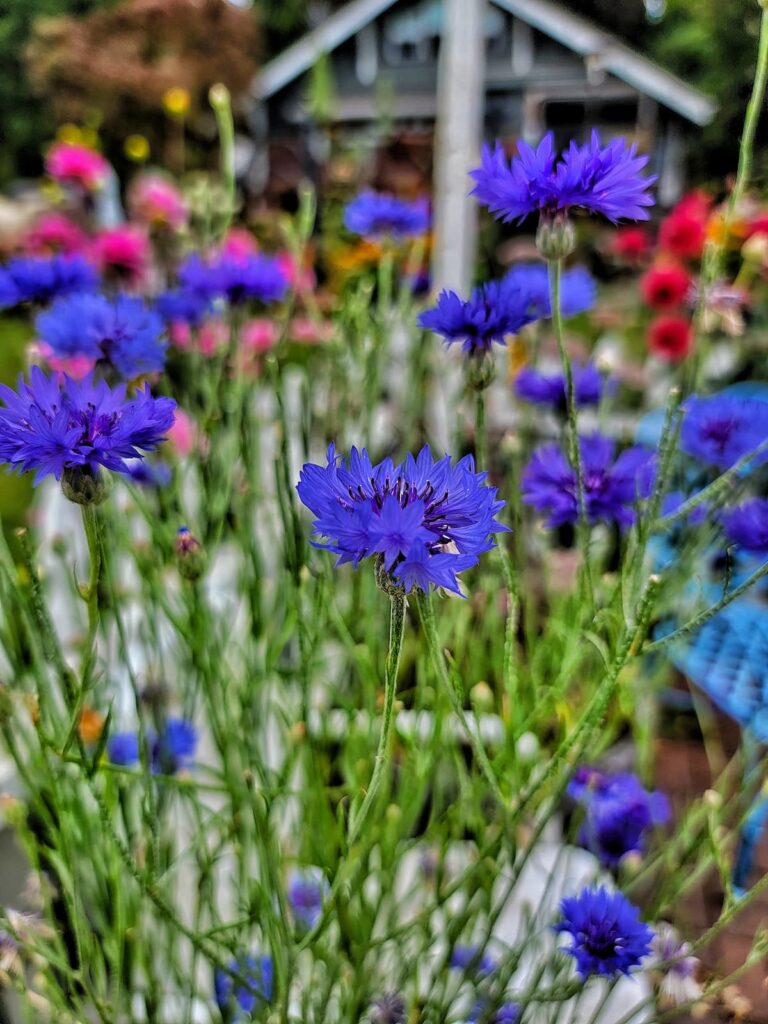
Bachelor’s Button, also known as Cornflower, produces daisy-like blooms in shades of blue, pink, white, and purple, adding a cheerful and rustic touch to floral arrangements.
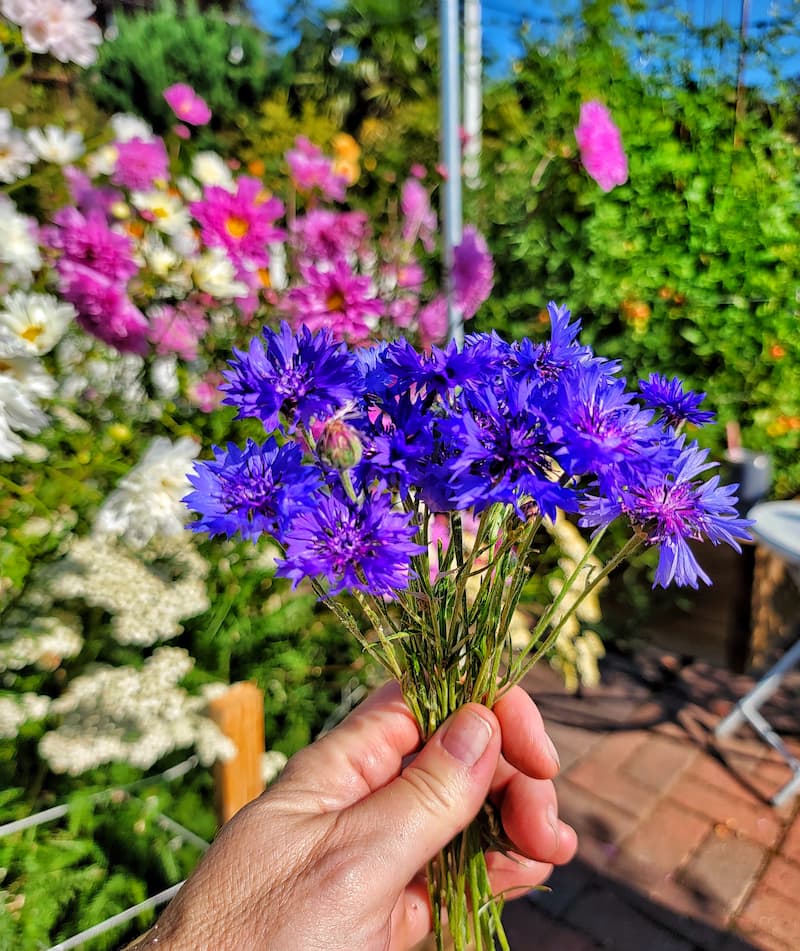
Their slender, sturdy stems and delicate, frilled petals make them a favorite for fresh and dried bouquets lasting up to a week or more.
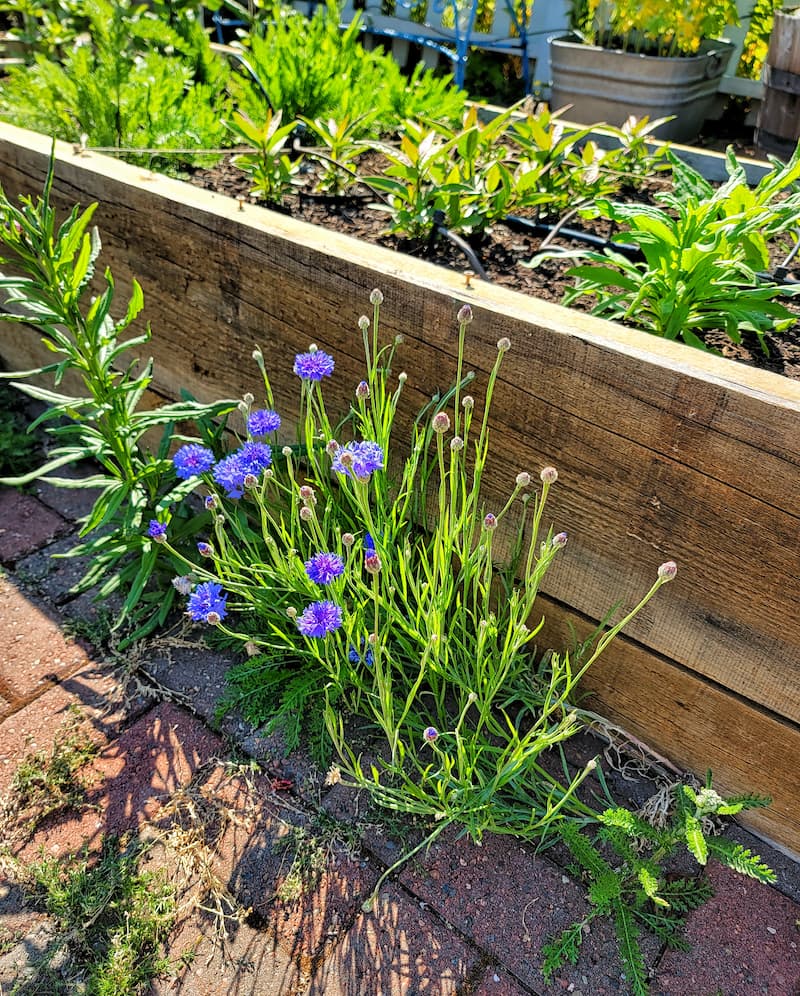
One of the standout features of Bachelor’s Button is its prolific self-seeding ability. Once established, these plants naturally reseed themselves without the need for replanting.
Final Thoughts for Early Summer Flowers in the Garden
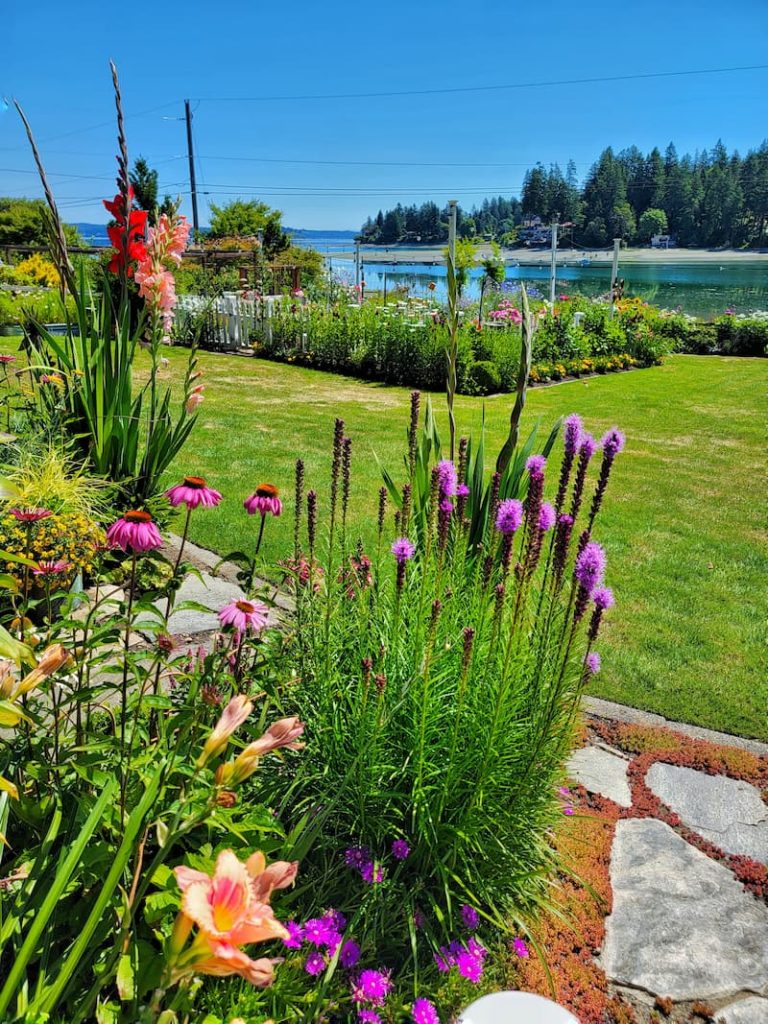
Consider growing a mixed collection of flowers in your early summer garden, from classic favorites like roses, daisies, and lilies to pollinator-friendly choices such as lavender, coneflowers, and sunflowers.
Whether you’re looking to add a splash of color, attract pollinators, or simply enjoy the joy of gardening, these flowers will inspire and elevate your outdoor space.
If you have any questions or additional suggestions, please share them in the comments below. And be sure to share this blog post link with anyone who may find these gardening tips useful.
Until next time,
Happy Gardening!

I’m a self-taught hobby gardener. Everything I share on my blog is my opinion and what has worked for me.
MORE POSTS
For You To Enjoy
Follow Me for More Inspiration
Shop my Amazon Storefront, LTK sources, and my favorite home decor, garden, and lifestyle products. When you purchase from one of my links, I earn a small commission to continue sharing all the content you expect on my blog.
Be sure to follow me on Pinterest, Instagram, Facebook, TikTok and LIKEtoKNOW.it. Do you like gardening? Join my Facebook Gardening Tips & Tricks group.

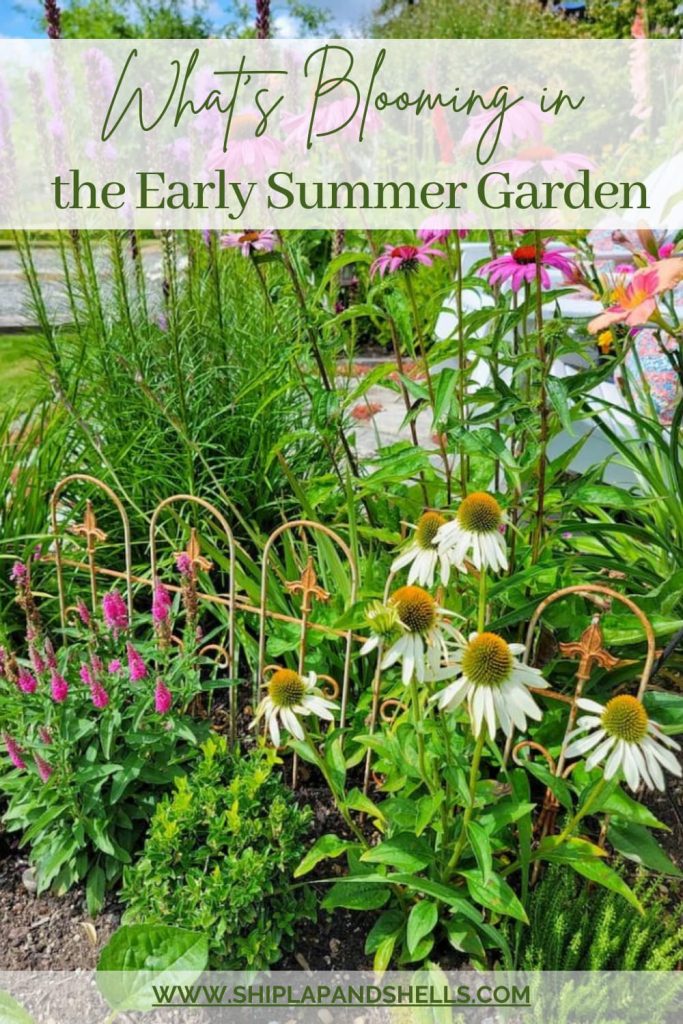


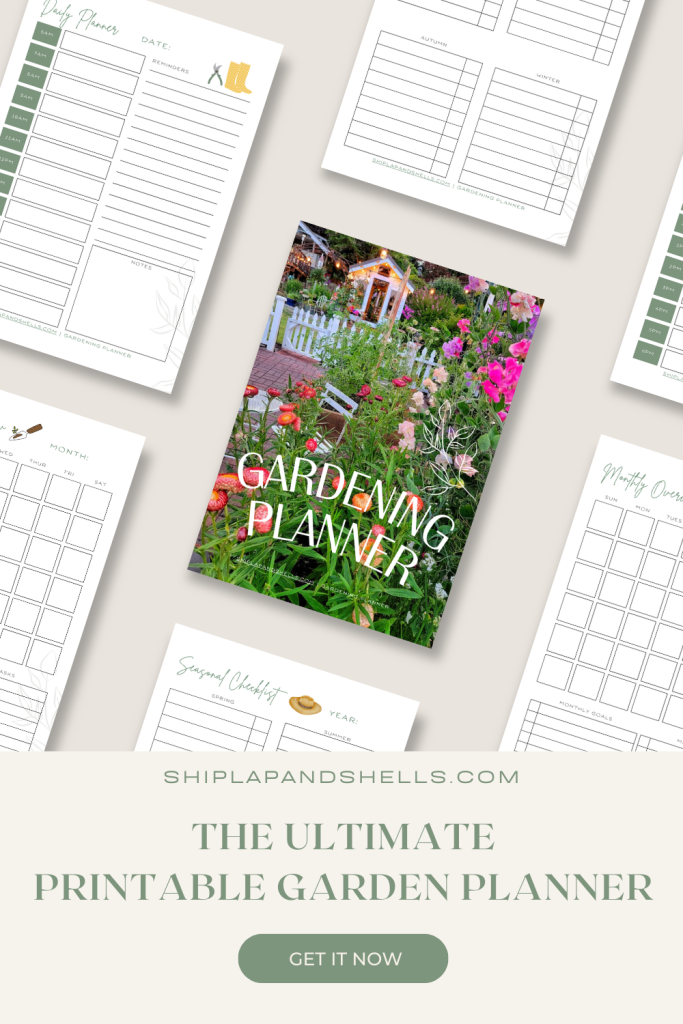

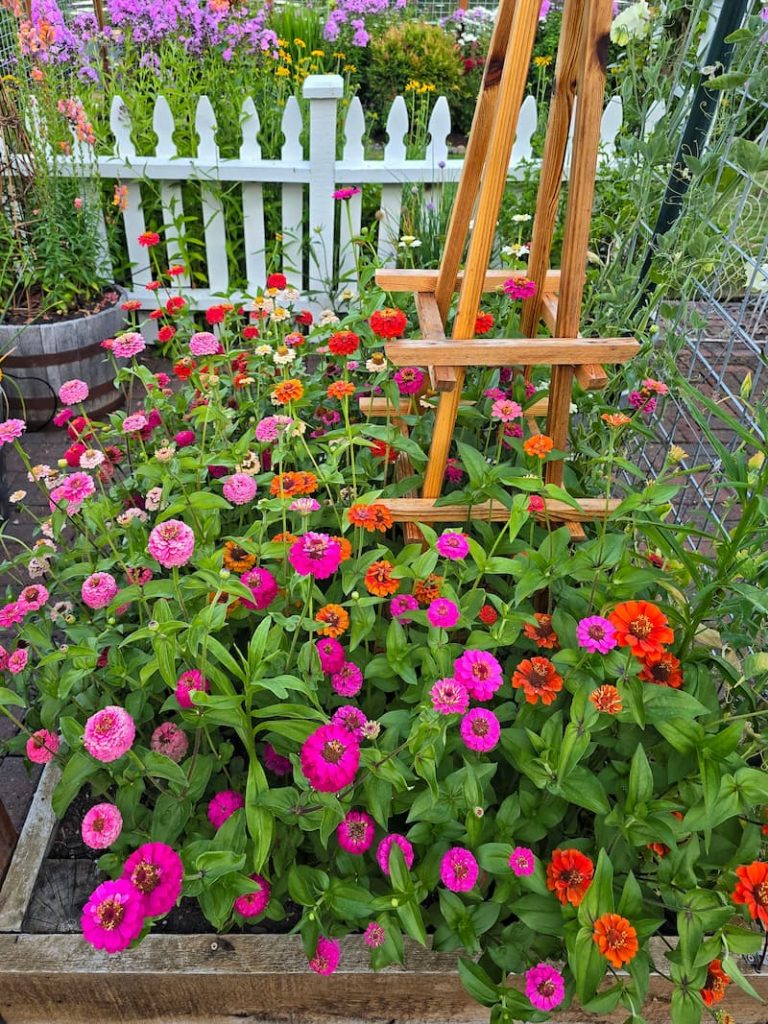
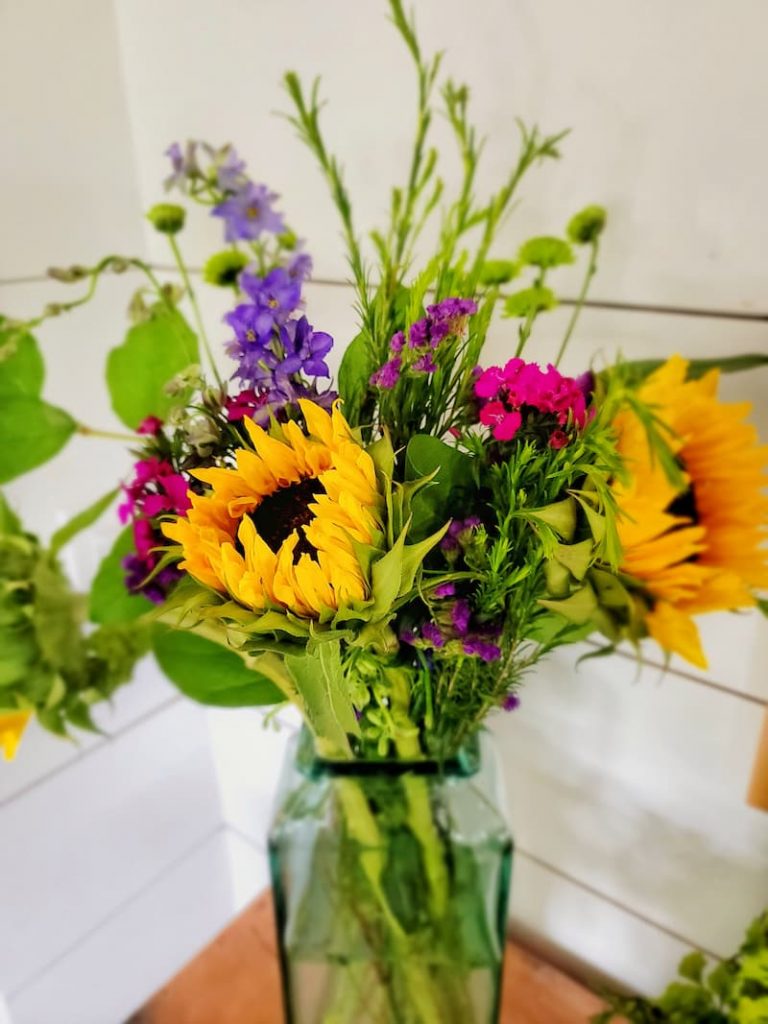
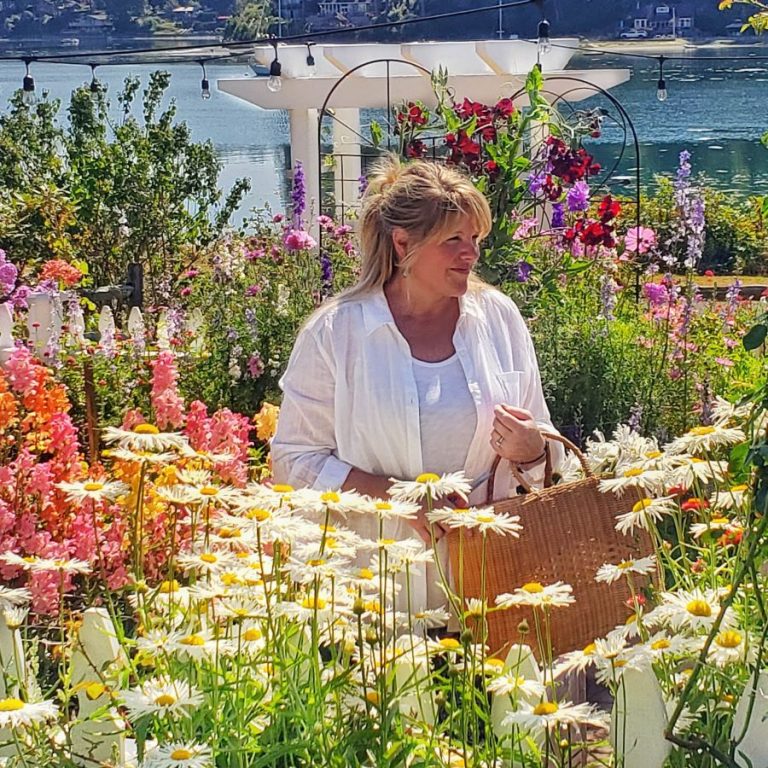
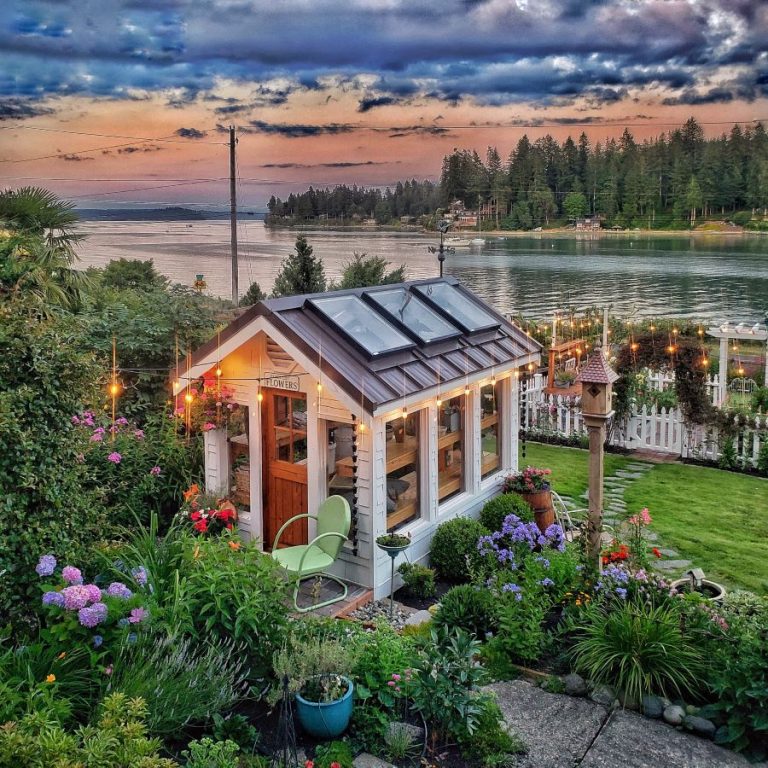
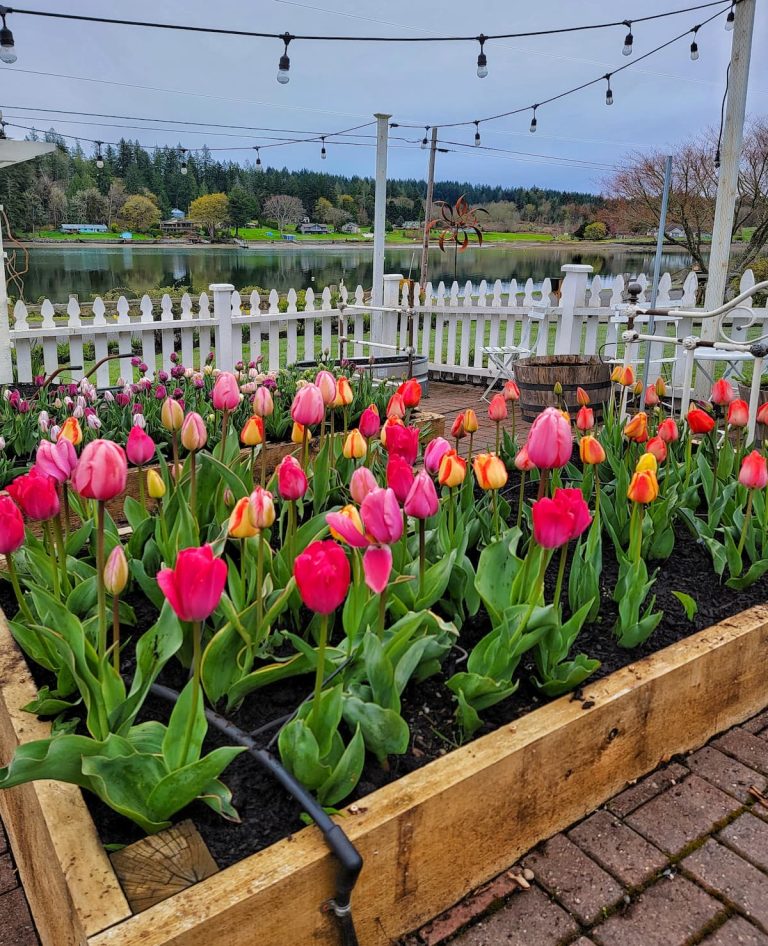
Your gardens are incredibly gorgeous! Do you dry your strawflowers for arrangements? I loved that nursery you visited . I got a lot of inspiration for yard decor and flowers I already have, thank you for sharing😊
Hi Sharon,
I am incredibly sorry for being so late to respond to your comment. And thank you so much for the compliments, I really appreciate it. I do dry my strawflower and statice and bring them in as just bundles on their own or as a dried flower arrangement. That’s why I grow three to four colors of strawflower each year so I can get a variety in the bouquets. Yes! I love that nursery too. I do wish it was closer and not a ferry ride or boat ride away but I’ll visit on special occasions. Thanks so much for reaching out!
I have to live vicariously through you and Stacy this year! What a bust of a garden season we are having in NH! In my bed of zinnias, I have 1 flower blooming that is only 4 inches tall and the rest of the hundreds of stems are maybe 5 inches tall. I have to laugh or I would cry!! That lily is just the prettiest color. So much inspiration!!